#//wanted to post this while it was still hispanic heritage month
Text
Dex holders dynamic (+ Elia)

#(f)art#insane man talks abt his ocs#pokegirl ocs (+ santiago)#Carmen (oc)#Santiago (oc)#alejandra (oc)#Elia (oc)#//wanted to post this while it was still hispanic heritage month
7 notes
·
View notes
Text
Hot Tamales | Ghost x Canis! OC + TF-141 + Los Vaqueros
Pairing: Ghost x f! OC
Warnings: language, the bois simp for food
Edited: No
A/N: A little post for Hispanic Heritage Month, a day after it ‘ended,’ but it’s always Hispanic Heritage Month for me lol. My mom and I made tamales a few weeks back and that kinda inspired this. I know it’s not what you’re expecting that I update but I wanted to get this posted even though it’s late. This could be considered part of the It’s The Dog series but as a separate one shot. Canis is Mexican but it can be read as any Latina Reader.
Masterlist
Character banner ©️ Me

🫔.
For the last day or so, Johnny not Ghost could find Canis and both were beginning to get a bit worried. So, Johnny asked around the base they were on if anyone had seen her. No luck until one of Alejandro’s Corporals said that she had been in the mess’ kitchen. Quickly sending a text to Ghost, Johnny made his way to the mess hall.
An incredible aroma came from the large room the closer down the hall he went. Ghost was already standing at the doors waiting for him.
“Ah, that smells so good L.t.” He grinned at the taller man.
“Very good.” Ghost replied, shockingly in approval.
Johnny was just about to push the doors open when a loud bang sounded from down the hall. It was Alejandro and Rudy.
“Te dije, Rudy! The smell is coming from here!” The Colonel shouted. “Mmm… tengo hambre.”
“You were right, Ale. But who’s making them?” The two men jogged to where Soap and Ghost were standing.
“You know what’s goin’ on, Alejandro?” Johnny questioned. “It smells really good! What is it?”
“No idea, amigo! Those are tamales!” He shook Johnny’s shoulder. “Don’t tell me you’ve never tried tamales before?”
Johnny shook his head and when Alejandro looked at Ghost, he also denied ever having them. Both Mexicans shook their heads.
“Oh, you’re missing out!” Rudy looked at them with pity.
“It’s only one of the finest dishes Mexican cuisine has to offer.” Ale added. “You’re in for a treat!”
They finally head in and see that a decent sized crowd had formed around the kitchen doorway. Many of them were practically drooling at the delicious smell. They made their way through the crowd and inside they saw Canis.
Rudy called out to her first, “Canis! You’re the one making tamales?”
She turned around at his voice. “Rudy, sí. I’ve been prepping since yesterday and now the tamales are steaming. I think they’ll be ready in about ten minutes. Think you boys can wait?”
Canis was wearing an apron that had the Los Vaqueros logo on the front. Earlier that day, she decided she would make one with the 141’s logo on it. It was stained with mole, pork, and masa. There was a very large pot behind her on the stove filled to the brim with tamales. The food station was relatively clean after the mess she had made the previous day and that morning. She’d taken the time to put everything away and clean up. Although, there were still some corn husks left on the table.
“Of course we can wait, lass!” Johnny called out from behind Ghost. Whose body took up much of the doorway.
Then the group had the others waiting around go to sit at the tables while they waited for the tamales to finish cooking. When the ten minutes were up, the mess staff helped Canis distribute the tamales to the voraciously hungry soldiers and staff. They thought that the tamales would be gone by then but out came Canis with a large warming platter filled with tamales.
“I saved a bunch for you guys, and there’s more in the freezer to be steamed later on.” Canis smiled at them, placing the platter of tamales onto the table. She gestured to the food. “Go ahead.”
Alejandro and Rudy were quick to place a hot tamale on their plates. They were not as careful to spread apart the corn husks and dug into the steaming meal.
“Ah-Ah!” The two sucked in air to their mouths to cool off their burning tongues.
Canis shook her head at the two traviesos. “Con cuidado! You’ll burn your tongues.”
“It tastes better when they’re hot and fresh.” Alejandro panted, still cooling his mouth. Canis rolled her eyes at him.
On the other hand, the Brit and the Scot were going at their food at a much slower pace. They seemed to be enjoying themselves.
“This is good, Canis.” Ghost looked at her.
“Thank you, Ghost.” She smiled and her cheeks burned. Alejandro cleared his throat.
“If a woman makes you tamales, she’s probably in love with you.” Alejandro smirked at her. The other men whipped their heads to look at her with wide eyes. Ghost squinted at her, an unfamiliar emotion in his dark eyes. Canis’ brow rose in question. “Who on the team have you fallen for, amiga?”
“No one, Alejandro. I just wanted to make some tamales for everyone.” She side-eyed him. “It’s my Abuelita’s recipe. I was feeling a bit homesick so I made these to help cheer me up.”
Ghost hummed while Rudy and Johnny nodded their heads.
“They’re the best thing I’ve ever eaten, and I’ve eaten lots of things, lass.” Johnny complimented.
Canis chuckled. “I’m glad you guys are enjoying it.” She fiddled with her fingers. “I was worried that I’d mess it up or something. I even messaged my Abuelita about a few things.”
“Nothing to worry about Canis! They’re the most delicious tamales I’ve ever had.” Alejandro went to go back to eating but jolted upright. “Don’t tell my mama I said that!”
Canis and Rudy burst out laughing. Johnny grinned at them and Ghost ignored them. He basically inhaled the whole tamale in three bites, and was glancing at the plate of tamales.
Canis noticed.
“Who wants seconds?”
~~~~~
Bonus:
“They remind me of my grandmother’s tamales.” Rudy teared up. “I miss her.”
“Ayy, don’t cry Rudy.” She pat his back. “Here, have another tamale.”
Canis placed another wrapped tamale on his plate before turning back to the stove to finish cleaning up. She didn’t see the glint in his eyes nor the smirk on his lips, but Alejandro did.
“Rudy, you cabrón! That’s your fourth one!”
Masterlist
🔖 Taglist:
@missroro @wobblywolf @animarix @islanderr @sae1kie @abbiesxox @frazie99 @undercover-smutlover
#Tamale enthusiast here!! 🙋♀️🫔#call of duty#simon ghost riley#codmw2#simon riley#cod#cod mw2#call of duty modern warfare 2#john soap mactavish#rodolfo parra#rudy#alejandro vargas#alejandro#sergeant canis#canis cod#canis call of duty#it’s the dog#it’s the dog one shot#one shot#ghost#cod ghost#ghost call of duty#ghost cod#ghost x reader#ghost x oc#ghost x dog handler oc#ghost x female oc#ghost x female reader#ghost x f!reader#ghost x latina oc
73 notes
·
View notes
Text
If you’re Latine/Latinx who don’t know how to speak Spanish. That’s okay, you’re still Latine/Latinx.
So since it the last day of Hispanic heritage, and honestly I wish I was more participle with this month as an Hispanic. I’ll try to do that next time, I think honestly I just really don’t know what to exactly post, but then I had a thought. Something I wish I had someone tell me back then. So I want to talk about it in honor of Hispanic heritage month, sorry if I did this on the last day, I’ll do better next time. But for now, I wanna share just a small story while also showing encouragement, so hope you like it.
So, If you go on my introduction post, I noted that I’m Puerto Rican and also, that I don’t know how to speak Spanish. Ironic/silly isn’t it? It even more so considering mostly all my family speak Spanish, so your a question that your asking is “didn’t your folks teach you?”. Well, haha about that, you see I’m not gonna reveal anything super personal, all imma say to give context is that I couldn’t talk until I was exactly five years old; so my mom kinda had no other choice but to teach me English. So most of my childhood that was the only language I learn.
Now probably also wondering “well, you learn English? didn’t you have Spanish class?”, yes I did, in my state at least, the require language to learn was Spanish (which imma reveal a very silly funfact: I thought because of movies/show the require language was French because all they learn was french.), so as a kid I wanted to learn; only, people there already were very advantage in Spanish, a lot better than me, (small context: in my state, majority of the people are more Spanish speakers, let me clarify I’m not saying this is bad since I do love Spanish. I’m just clarifying to provide context) and not only that, the spanish at least I was taught were completely different than the Spanish I know with my folks. So as a kid, it made me really insecure about my Spanish skills, like sure I knew some basic and whatnot but I couldn’t and still can’t speak fluently like my folks. So overtime, I got insecure about my identity too. It got to the point that I wasn’t proud to be Hispanic, because back then a thought that would play was “what’s the point if I can’t even speak our basic language?”. This wasn’t to say I didn’t love being Puerto Rican or Puerto Rico as a whole, I love being Puerto Rican and Puerto Rico, I just felt in a way, I’m not worthy to call myself Puerto Rican if I couldn’t speak Spanish. I still remember a teacher even told me that “it kinda is your mom fault for not teaching you” and it boy if that didn’t make me more self conscious. (There was more, but I’m not comfortable revealing them just yet. So maybe next time my ghostly pals)
But then, I remember, 2020, I watched Emirichu’s video about her Asian experience. And it help me feel emotional, because while my parents didn’t move form Puerto Rico to America (that goes to my grandma), like Emily, I had this big disconnect from my Puerto Rican roots and often feel envious when others spoke better Spanish than me. And not only that, I did at some point and like mention I felt embarrassed so I convinced myself say “oh I can never like tostones” or “I’m definitely going to feel more of an outside if I ever visit Puerto Rico one day” or even “I might as well not try, it already too late”. But, the video let me know I wasn’t alone. And even seeing comments under the video, it help me feel like I wasn’t the only one with this identity crisis. But one thing that I feel is upmost important that I toke from the video, “you’re still Latine/Latinx/any other race no matter if you can or can’t speak Spanish or any native language.” And man, I wish I heard that a lot during my childhood rather than feeling embarrassed, ashamed or feel out of place. But I’m happy I found this video, and I’m glad the video found me and others like me.
So overtime, I began to slowly become appreciative of my roots. I think what was maybe the final push was Lin Manuel Miranda’s Broadway turn movie “In the heights”, now I love the Broadway, so when watching the movie, I couldn’t help but love it even more, because I appreciate how the movie celebrate all walks of Latine/Latinx/Hispanic cultures from Dominican, Cuban, Chilean, Mexican, Colombian, Puerto Rican and more. How this community is so vast and vibrant of overall, proud of their heritage. So I began to slowly being loving my heritage, and for healing, whenever I make an oc, I make them Puerto Rican or headcanon an existing character as Puerto Rican, or learn fact about Puerto Rico to feel more connected (like funfact did you know Puerto Rico is also called Isla del Encanto? Isn’t that beautiful? 🥹) and even now I would ask my mom “hey what does *insert Spanish phrase* mean?” Granted, I will still get moment where I doubt or have imposter syndrome (or as my mom would sometimes say I am my worse critic). But I stop myself, and say “hey, you’re still Hispanic/Latine/Latinx.” Or “don’t worry, you’re still learning.” It’s still a process. And even now I still don’t know Spanish, like I guess to best describe it, I know what people can be saying or what they’re talking about depending on the context but I don’t know how to respond back. Nor write..or spell. But I still am learning as I go, my folks told me one of the best way is to listen to Spanish song and so I’ve been trying to do that or I’ll ask my mom “hey is this accurate?”. So I just want to tell the people who will read this or my Hispanic/Latine/Latinx ghost pals that, no matter if you can’t speak the language, like certain food from your roots, or are feeling the same way I felt, it’s okay, your still valid and you’re still Hispanic/Latine/Latinx. I can’t say it going to be easy, because I’ll be a hypocrite if I did, but, I can say, it worth it each step of the way. And I wish you luck amigos.
But, thanks for taking the time to read this, I know this isn’t my usually good omen content and I’m sorry if I wasn’t super active for this heritage month. I’ll try better next time. But until then, hope your having your last day of Hispanic/Latine/Latinx heritage month! what is it I can do to be more participant for next time? Let me know! Or if you have any question about this post or anything, my inbox is open ask away my fellow ghost ^v^ And always, especially with it still being all hallow’s Eve, stay spooky my pals!

#happy hispanic heritage month#hispanics#latine heritage month#latine tag#latinx#Latine#puerto rico#puerto rican#puerto rico 🇵🇷#🇵🇷
35 notes
·
View notes
Note
First I would like to say I'm super interested in your IF and I'm looking foward to the demo 😊.
Next I wanted to say I ready you Hispanic heritage post and the gasp I made when I saw you said you were part El Salvadoran. My family is from El Salvador too and I relate. My parents immigrated to the states. I regret not learning more Spanish and about my family's culture when i was younger. My father always spoke to us in English so we could integrate easier but my mom always pushed for us to learn Spanish so we could communicate with our family. So my brother's and I can speak Spanish but not fluently and we have been teased by family for how we speak. At the same time my older brother was ridiculed in elementry by not just his classmates but the techers as well since he knew more Spanish than English. I flet like I didn't really have a place I felt like i was too american to be spanish but to spanish to be american if that makes sense. It took some time but I've learned to respect and love where my family came from and even of my Spanish isn't perfect I love being able to communicate with others in Spanish.
Sorry for the long winded ask seeing your post made me happy 😊 I'm glad you can find pride in being Hispanic.
( ´ ∀ ` )ノ Thank you so much for sharing your experiences with me! Ah, and I'm so happy to hear that you've been able to connect more with your Salvadoran heritage! My paternal family immigrated households from El Salvador gradually (my grandma specifically immigrated while notably pregnant with my dad, some time after my grandpa, aunt, and uncle had immigrated as well) leading up to and during the civil war. Many are still Residents to this day rather than full-citizens, a fact I didn't learn until high school when my mom announced my Uncle's citizenship (which I naively assumed him to have already due to his former career in the Marines).
My mother's side is more blurry on immigration. My grandpa immigrated at age 5 from Chihuahua. (Got his first job in the US at 8, set to retire next year which will be first time he hasn't been actively employed in one-to-two jobs since then!). Funny Story: During the process, US officials legally changed his middle name to his first name because his original name was "too hard to pronounce". His parents allowed it to keep the process smooth, the language barrier made it hard to argue (or fully understand what was happening until it was done), and because they figured it would make his life in America easier. Now, instead of Arturo, he's Enrique! (He gets a big laugh out of that!)
My maternal grandma's parents are unclear: her father immigrated from a ranch in Jalisco for reasons unknown (not beyond gossip worthy of a soap opera, haha!) and her mother's birthplace is assumed(?) to be Colorado for reasons no one can provide though its an affirmed certainty that she was Mexican-American (according to everyone who knew her).
I absolutely relate to the too-American yet too-Spanish sentiment! In California, my friends teased me for being the “whitest” Latina they’d ever known yet in Oregon I was told that “no one could ever mistake you for a white girl” (alongside non-verbal reference to my complexion, twice, from two different people!). Very mixed signals in the two environments overall! I recognize though that it’s a lot harder for my siblings considering how much colorism is thrown at them.
This all becomes way more long-winded on my own part from here on out, so I'll place a cut for those uninterested!
My siblings, being considerably light-skinned to more olive-toned (unlike me), have been bullied or slighted since they don’t speak Spanish and don’t inhabit common stereotypes / traits / behaviors certain classmates expect (? the rationale befuddles me)— all combining into their peers sometimes not “believing” their Hispanic heritage. My youngest sister had a group of girls all insist she was Irish for months while calling her a liar (to the point of her crying when she came home), my other younger sister has been repeatedly mistaken for Korean / Romanian / Filipina / white (and "shamed" for trying to seem "more ethnic than she is" and enacting "cultural appropriation" by some that thought her white non-Hispanic), and my brother has been mistaken for Chinese-American and white. Such misconceptions are not always negative - they can lead to a good laugh, really! - but the aggressiveness that some people respond with when corrected is just baffling to me!
(I, myself, have been spared from such incidents other than a rare couple of assumptions of me being Indian-American - one occasion being from an Indian vendor in Italy who got such a laugh out learning that I'm actually Mexican-American - since that's the more common / known label I used compared to Salvadoran-Mexican-American - he allowed me to receive a free item! It's a treasured bracelet for me to this day.) I once even had a paternal first cousin of mine (a light-skinned man and an English-speaker only as well) express that he was envious of my older sister and me because our comparatively brown skin and dark hair made our Hispanic heritage undeniable. It was a comment I never expected from him!
It’s incredibly jarring how differently my siblings and I have been treated as Hispanics by a handful of non-Hispanic peers as they are asked to “prove” themselves more than I have ever been asked to simply because of our surface-level appearances!
Anyways, aha, my parents initially raised my older sister and I as bilingual, a time of vague memories (specifically my recollection that the word "water" sounded and felt disgusting compared to the prettiness of "agua", haha!), but upon our enrollment in school my dad underwent a hard 180 degree shift by enforcing an English-only household. (He had considerably unfortunate experiences learning English in his Los Angeles public school at a time where his family had been solely Spanish-speakers, and it seems that a lot of that past became projected onto us). I remember my dad responding to my childhood requests to learn Spanish with warnings we would seem "dirty" or "stupid". In contrast, I also recall him praising me for speaking like the "white kids" at my school since it made me sound "intelligent" and "like I had money", similar to his "white bosses" whose jobs I could "grow up to have" with my English skills.
My older relatives spoke to us only in English if they had some fluency (insisting that they needed us "for the practice") or relied on relatives as translators. My siblings and paternal first cousins, except one (the youngest of us all), are the only younger generation members to be monolingual English speakers on both sides. It's come with considerable teasing here as well. The most cutting teases came from my school peers though. (;´∀`) (I once made a friend fall out of her chair in a laughing fit because of how I pronounced "Cardenas". The humiliation made me want to sink into the floor, haha!)
I absolutely understand that in-between sensation of American and Latin American. Sometimes, I feel more like a tourist among my own relatives rather than a part of the greater whole. I encounter some aspect of my culture in the streets and feel like an outsider looking-in despite it all being a reflection of my childhood. I remember my Salvadoran grandpa beginning a story to me with "The Americans . . ." followed by a pause. It was then he pointed to me with a smile and the correction, " You Americans . . ." I never expected that to hurt me as it did as I felt so distanced from him, othered from who he is.
University, an environment where I truly felt like an ethnic minority for the first time in my life, really sent me into a reflective period about what it meant to be Hispanic, what truly defines someone as bearing this identity until it is so diluted that it can no longer be grasped: and I'm still contemplating the answers! It's likely to be a lifelong journey for me as I assume it is for countless others, Hispanic or not, to define my heritage and the ways I am to embody it, whether that be through rituals, values, language, actions, celebrations, connections, beliefs, or whatever more.
Anywho, it's all gotten so much better in the present! My Spanish comprehension has improved so significantly, though I often feel like a poser as I work on my pronunciation. I am by no means anywhere near fluent, not even proficient I would say, but the language that made as much linguistic sense as pretty instruments to me as a child has become something I can overhear and understand! Baby steps will keep me going along!
My dad has also become much more insistent about our cultural pride as Salvadorans, Mexicans, and Americans in equal parts. My parents like to uphold the concluding quote of my big sister's very first All About Me essay in sixth grade as our household motto: "50% Mexican, 50% Salvadoran, 100% American". In other words, though my siblings and I are American born-and-raised, it's important to remember the two halves that form the whole of our roots and support network as a family. All three aspects are an overlap rather than a divide, a filter rather than an opposed image of who we should and can be. d(・∀・○)
Apologies for the rant! It all kind of slipped out from me as it tends to do, and it's all quite messy as a result! I'll end my word vomit here as I hope not to have caused too much of a headache if anyone reached this far, haha!
13 notes
·
View notes
Text
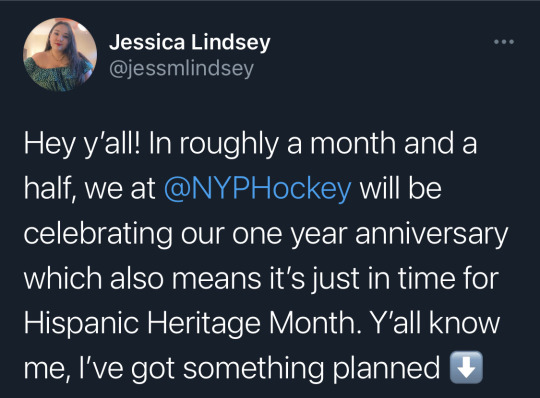

Cross-posting here because it may reach more people:
[tweet from jessmlindsey reads: Hey y’all! In roughly a month and a half, we at @NYPHockey will be celebrating our one year anniversary which also means it’s just in time for Hispanic Heritage Month. Y’all know me, I’ve got something planned. (Down arrow emoji)]
[picture in tweet reads: This year I would like to do something a little different than last year that still gives Hispanic/Latinx hockey fans a voice. I want to speak with Hispanic/Latinx fans of EACH NHL team (including Seattle) and do a profile on the teams with interviews from the fans.
If you are interested in speaking with me about this, DM me with your team. I want to speak with more than 1 person per team.
I think it’s important to highlight that there are Hispanic fans for each team across the league. My goal is to give a voice to Hispanic/Latinx fans while also showing more can be done in hockey for us and showing our teams’ successes when it comes to our community.]
79 notes
·
View notes
Text
Hispanic/Latino horror movies
In honor of Hispanic Heritage month, this week we talked about horror movies out of Latin American and Spanish speaking countries. There were some we couldn’t get to so here is the full list:
Spain
The Devil’s Backbone (2001)
Rotten Tomatoes: 92%
Audience Score: 89%
Google Score: 85%
IMDb: 7.4/10
Critics Consensus: Creepily atmospheric and haunting, The Devil's Backbone is both a potent ghost story and an intelligent political allegory.
Description: “Set during the last years of the Spanish Civil War, The Devil's Backbone is a Spanish gothic horror movie that follows Carlos, a young orphan boy who is deposited at Santa Lucia School among several other children who have been displaced by the conflict. Though he finds friends in the professor and the head mistress, he is plagued by a wandering spirit with a link to the violent caretaker's secret past.”
Trivia: The movie, which he wrote in college and was in development for 16 years, is strongly inspired by Del Toro’s personal memories, especially his relationship with his uncle, who supposedly came back as a ghost. It is also included among the "1,001 Movies You Must See Before You Die" edited by Steven Schneider. Although filmmaker Guillermo del Toro is Mexican, this film is set in the Spanish countryside (largely filmed in Madrid) that’s why it’s on the Spanish list. The Devil’s Backbone has all of the impactful elements of spirituality, horror, and the supernatural that come up again and again in Del Toro’s work. This film has been referred to as the “brother film” of one of Del Toro’s best known works, Pan’s Labyrinth.
[REC] (2007)
Rotten Tomatoes: 89%
Audience Score: 82%
Google Score: 85%
IMDb: 7.4/10
Critics Consensus: Plunging viewers into the nightmarish hellscape of an apartment complex under siege, [Rec] proves that found footage can still be used as an effective delivery mechanism for sparse, economic horror.
Description: “Late-night TV host Angela and her cinematographer are following the fire service on a call to an apartment building, but the Spanish police seal off the building after an old woman is infected by a virus which gives her inhuman strength.”
Trivia: The movie was filmed chronologically in real locations (no sets were built for the movie). The actor’s were never given the script in its entirety and didn’t know what was going to happen to their characters until the day of filming. The movie is also a big inspiration for the horror survival game Outlast.
Considered The Blair Witch Project of zombie movies, REC had a lot of competition in the found footage style (it came out the same year as George Romero’s Diary of the Dead and the first Paranormal Activity movie). It more than holds its own among them, so much so that an American remake called Quarantine came out the next year. Director Jaume Balagueró keeps the movie disturbingly real and doesn’t fall prey to jump scare after jump scare.
Veronica (2017)
Rotten Tomatoes: 88%
Audience Score: 49%
Google Score: 80%
IMDb: 6.2/10
Critics Consensus: A scarily effective horror outing, Veronica proves it doesn't take fancy or exotic ingredients to craft skin-crawling genre thrills.
Description: “During a solar eclipse, a teenage girl and her friends want to summon the spirit of the girl's father using an Ouija board. However, during the session she loses consciousness and soon it becomes clear that evil demons have arrived.”
Trivia: Based on the true story of 18-year-old Estefanía Gutiérrez Lázaro. I won’t go too far into it because we may do an episode on it in the future but if you want spoilers, watch the movie (if you dare).
Directed by Paco Plaza (same as REC), the possession theme is done over and over again in horror but this movie is a terrifying and fresh take.
The Bar (2017)
Rotten Tomatoes: 88%
Audience Score: 55%
Google Score: 75%
IMDb: 6.3/10
Description: “In bustling downtown Madrid, a loud gunshot and two mysterious deaths trap a motley assortment of common urbanites in a decrepit central bar, while paranoia and suspicion force the terrified regulars to turn on each other.”
Directed by Álex de la Iglesia, it’s labeled as a horror-comedy. You can watch it on Netflix.
Who Can Kill A Child? (1976) - Tells the story of a happy couple, two English tourists who decide to vacation on a secluded island in the Mediterranean. There they discover – almost too late- that the island has been taken over by a group of murderous children.
The Baby’s Room (2006) - Featured on Six Films to Keep You Awake at Night. A new family renovates and moves into a grand old house. Nervous first-time mom installs a baby monitor but hears mysterious sounds on the other side. Once they install a high-tech video baby monitor, what they see chills them to the bone.
Sleep Tight (2011) - Apartment concierge Cesar is a miserable person who believes he was born without the ability to be happy. His self-appointed task is to make life hell for everyone around him, a mission in which he has great success. It has big home invasion/stalker vibes.
Timecrimes (2007) - A man accidentally gets into a time machine and travels back in time nearly an hour. Finding himself will be the first of a series of disasters of unforeseeable consequences. It sounds like a “Happy Death Day” type of plot (but proceeding it by a decade).
Thesis (1996) - Angela is doing her thesis on the effect of violence in the media when she discovers a snuff film. This discovery leads her down a dark path where she must confront her greatest fears and question everybody around her.
Witching and Bitching (2013) - One article I read said it perfectly, “What Shaun of the Dead did for zombies and What We Do in the Shadows did for vampires, Witching & Bitching essentially did for the cinematic depiction of witches, albeit on a less visible scale.” Great pick if you’re looking for something a bit more lighthearted.
Mexico
Pan’s Labyrinth (2006)
Rotten Tomatoes: 95%
Audience Score: 91%
Google Score: 90%
IMDb: 8.2/10
Critics Consensus: Pan's Labyrinth is Alice in Wonderland for grown-ups, with the horrors of both reality and fantasy blended together into an extraordinary, spellbinding fable.
Description: After the Allies invade Nazi-occupied Europe, a sadistic captain sends a troop of Spanish soldiers to flush out rebels,bringing his new wife and her daughter along on his exploits. While his family resides in the countryside, he leads his men on a murderous rampage, much of which is witnessed by his step daughter. In an effort to escape her reality she plunges into Pan's Labyrinth, a mystical world at the border of her own.
Trivia: Guillermo del Toro is famous for compiling books full of notes and drawings about his ideas before turning them into films, something he regards as essential to the process. He left years worth of notes for this film in the back of a cab, and when he discovered them missing, he thought it was the end of the project. However, the cab driver found them and, realizing their importance, tracked him down and returned them at great personal difficulty and expense. Del Toro was convinced that this was a blessing and it made him ever more determined to complete the film. Del Toro also repeatedly refused offers from Hollywood producers, in spite of being offered double the budget, provided the film was made in English. He didn't want any compromise in the storyline to suit the "market needs" (he even did the English subtitles himself). The film received 22 minutes of applause at the Cannes Film Festival and in 2007, it became one of the few fantasy films ever nominated in the Best Foreign Language Film category at the Oscars. It’s another on the list "1,001 Movies You Must See Before You Die" edited by Steven Schneider with The Devil’s Backbone. It was on more than 130 top 10 lists in 2006. It is also the 5th highest grossing foreign language film in the US.
The Similars (2016)
Rotten Tomatoes: 95%
Audience Score: 49%
Google Score: 75%
IMDb: 5.9/10
Critics Consensus: A smart homage to genre filmmaking, The Similars is a fun and frightening film that balances socio-political issues with aplomb.
Description: A monstrous, once-in-a-lifetime thunderstorm strands passengers in a remote bus station outside Mexico City in 1968. As they listen to the radio, they realized that the storm has spread all over the world. As they look at each other, they also realize that everyone’s faces are slowly changing, and not for the better.
Trivia: The film used make-up and special effects techniques never before done in Mexico. Director Isaac Ezban was influenced by B-movies of the 50s and 60s as well as TV shows and movies like “The Twilight Zone”, “The Thing”, and “Invasion of the Body Snatchers”.
We Are What We Are (2010)
Rotten Tomatoes: 72%
Audience Score: 48%
Google Score: 77%
IMDb: 5.7/10
Critics Consensus: We Are What We Are is elevated horror that combines family drama and social politics, with plenty of gore on top.
Description: After a family patriarch dies, his survivors are tasked with continuing the rigid family rituals that involve hunting meat, preparing it for consumption, and eating it. The “meat” in question is human flesh, since they’re a family of cannibals. With two detectives hot on their tail, the family of cannibals strains to maintain their family traditions in a modern urban environment.
There was an English language remake in 2013 (86% on Rotten Tomatoes) with Wyatt Russell and Odeya Rush (Lady Bird, Dumplin’, and Goosebumps)
We Are The Flesh (2016) - A joint French-Mexican production released in Spanish as Somos la carne, this post-apocalyptic nightmare involves a brother and sister who roam the land desperately seeking food until a kindly old man takes them in under the condition that they help him renovate an abandoned building. Oh, and they also have to have sex with one another while he watches. And after he breaks their will by getting them to do that, he makes them do all sorts of other things. This film was one of only four in Mexico to receive a “D” rating—which is reserved for subject matter that is considered extremely disturbing and/or pornographic.
The Witch’s Mirror (1962) - An abusive and cheating husband kills his wife so that he can be with his mistress. The woman’s godmother was a witch who originally tried casting a spell on a mirror to protect her from domestic violence, but the spell failed. Still, she is able to bring the woman back from the grave, and the two witches set out to destroy the evil woman-beater.
Here Comes The Devil (2012) - A married couple lose their children while on a family trip near some caves in Tijuana. The kids eventually reappear without explanation, but it becomes clear that they are not who they used to be, that something terrifying has changed them.
Chile
Downhill (2016)
Rotten Tomatoes: 60%
Audience Score: 22%
Google Score: 43%
IMDb: 3.5/10
Description: Deeply upset by the passing of his best friend, a professional BMX rider accepts to partake in a race in Chile. Everything goes as planned until he stumbles upon a man who is infected by a mysterious virus and becomes the target of local assassins.
Trivia: Filmed in 13 days
Post Mortem (2010)
Rotten Tomatoes: 88%
Audience Score: 61%
Google Score: 70%
IMDb: 6.5/10
Description: In Chile, 1973, during the last days of Salvador Allende’s presidency, an employee at a Morgue’s recording office falls for a burlesque dancer who mysteriously disappears.
Aftershock (2012)
Rotten Tomatoes: 39%
Audience Score: 24%
Google Score: 61%
IMDb: 4.8/10
Critics Consensus: Aftershock hints at an inventive twist on horror tropes, but ultimately settles for another round of mind-numbing depravity that may alternately bore and revolt all but the most ardent gore enthusiasts.
Description: In Chile, a group of travelers who are in an underground nightclub when a massive earthquake hits quickly learn that reaching the surface is just the beginning of their nightmare.
Trivia: Horror icon Eli Roth wrote and stars in this film.
To Kill A Man (2014) - An attack on his daughter leads a mild-mannered family man to take revenge on the vicious street thugs who have tormented him and his family for a long time.
Columbia
Out Of The Dark (2014) This is in English
Rotten Tomatoes: 24%
Audience Score: 22%
Google Score: 77%
IMDb: 4.8/10
Description: A family moves to Colombia to take over the operation of a manufacturing plant, soon they learn their new home is haunted.
Trivia: Starring Julia Stiles (10 Things I Hate About You, Dexter) and Scott Speedman (The Strangers, You)
The Squad (2011)
Audience Score: 53%
Google Score: 82%
IMDb: 5.3/10
Description: After a secret military base ceases all communications, an anti-guerrilla commando unit is sent to the mountainous location to discover what exactly happened. The squad expects to discover that the base was attacked and taken over by guerrilla units, but instead find only a lone woman wrapped in chains.
Trivia: In one scene where the actors are shooting guns, one actor accidentally picked up a real gun instead of the prop and fired a real shot (no one was hurt).
Cord (2015) - On a post-apocalyptic world of never-ending winter, a sparse cast of outsiders live underground. Due to their unsanitary conditions, sexual contact has become dangerous. Masturbation has become the paradigm of sexual experience and an array of low-tech devices with this purpose has come into existence. In this bleak reality, a dealer of such machines a sex addict make a deal: she will allow him to experiment new devices on her body in exchange of pleasure. Soon however, their relationship goes out of control.
The Hidden Face (2011)
Rotten Tomatoes: 80%
Audience Score: 72%
Google Score: 86%
IMDb: 7.4/10
Description: Shattered by the unexpected news of their irreversible break-up, an aspiring orchestra conductor is puzzled by his girlfriend's mysterious and seemingly inexplicable case of disappearance. But, can he look beyond the facts?
Trivia: There is a Turkish version of this movie and a 2013 remake out of India called “Murder 3”
At The End Of The Spectra (2006)
Google Score: 83%
IMDb: 6/10
Description: A young woman who has become agoraphobic due to a traumatic incident is holed up in her apartment, she begins to suffer from hallucinations, paranoia and an obsessive neighbour.
Trivia: There is a Mexican remake called “Devil Inside” and there were once rumors of an American remake starring Nicole Kidman but that’s the end of that.
Uruguay
The Silent House (La Casa Muda) (2010)
Rotten Tomatoes: 68%
Audience Score: 37%
Google Score: 63%
IMDb: 5.4/10
Critics Consensus: Shot in a single take, The Silent House may be a gimmick movie, but it's one that's enough to sustain dread and tension throughout.
Description: A girl becomes trapped inside a house and becomes unable to contact the outside world as supernatural forces haunt it.
Trivia: The plot is supposedly based on a true story that occurred in the 1940s in a small village in Uruguay. With a budget of just six thousand dollars, it was filmed using a handheld high-definition digital single-lens reflex camera (the Canon EOS 5D Mark II), 2 handheld lamps, and a couple of lightbulbs over a time period of just four days. The claim that the movie was filmed in one continuous take are suspect. The Mark II camera can only record up to 15 minutes of continuous video at a time. Uruguay's official submission to the Best Foreign Language Film category of the 84th Academy Awards 2012.
Monos (2019)
Rotten Tomatoes: 92%
Audience Score: 85%
Google Score: 69%
IMDb: 6.9/10
Critics Consensus: As visually splendid as it is thought-provoking, Monos takes an unsettling look at human nature whose grim insights leave a lingering impact.
Description: On a faraway mountaintop, eight teenaged guerillas with guns watch over a hostage and a conscripted milk cow. Playing games and initiating cult-like rituals, the children run amok in the jungle and disaster strikes when the hostage tries to escape.
Trivia: Moises Arias (Hannah Montana) and Julianne Nicholson (I, Tonya, August: Osage County) most of the other actors had never acted before. The movie draws inspiration from Lord of the Flies. Included among the "1001 Movies You Must See Before You Die", edited by Steven Schneider. It was selected as the official Colombian entry for the Best International Feature Film at the 92nd Academy Awards.
Peru
The Entity (2015)
Google Score: 66%
IMDb: 4.3/10
Description: A group of students decide to study 'reaction videos' and are led toward an old film, hidden in the archive room of a cemetery. It appears that everybody who has witnessed the film has met an untimely demise under suspicious circumstances. When the students view the footage, they discover first hand, what the demonic spirit is capable of. Fulfilling the ancient curse of a woman cruelly killed during the Spanish Inquisition.
Trivia: The Entity has been billed as Peru's first 3D horror film and to have been loosely based on true stories. Review websites Flickering Myth and Nerdly commented that the movie suffered from being too overly familiar to pre-existing works (Blair Witch, The Ring).
The Vanished Elephant (2014)
Rotten Tomatoes: 89%
Audience Score: 72%
Google Score: 88%
IMDb: 6.5/10
Description: Crime novelist Edo remains obsessed with what happened to his fiancee Celia after she disappeared during an earthquake. When an enigmatic woman brings him photos that may help him solve the mystery, he senses he is being drawn into a dangerous game.
The Secret Of Evil (2014)
Google Score: 65%
IMDb: 5/10
Description: Video footage depicting a supernatural encounter is all that remains of a filmmaker and his crew who disappeared while exploring a haunted house.
When Two Worlds Collide (2016)
Rotten Tomatoes: 91%
Audience Score: 69%
Google Score: 93%
IMDb: 7.6/10
Description: An indigenous environmental activist takes on the large businesses that are destroying the Amazon.
El Vientre (2014)
Google Score: 81%
IMDb: 6.1/10
Description: Silvia, a beautiful 45-year-old widow, is obsessed with having a child and finds in attractive but naive Mercedes the perfect candidate to bear it. Silvia kindly offers her a job and a room in her house, and then manipulates her into seducing a young man named Jaime. They soon fall in love and Mercedes becomes pregnant. Silvia will do anything in her power to keep the baby, even if it means leaving a couple of bodies behind.
Argentina
Terrified (2018)
Rotten Tomatoes: 77%
Audience Score: 65%
Google Score: 82%
IMDb: 6.5/10
Description: Paranormal researchers investigate strange events in a neighbourhood in Buenos Aires.
Luciferina (2018)
Rotten Tomatoes: 83%
Audience Score: 25%
Google Score: 69%
IMDb: 4.6/10
Description: Natalia is a nineteen-year-old novice who reluctantly returns home to say goodbye to her dying father. However, when she meets up with her sister and her friends, she decides instead to travel the jungle in search of mystical plant.
Francesca (2015)
Audience Score: 67%
Google Score: 73%
IMDb: 5.3/10
Description: Two detectives track a serial killer who has been targeting the impure. To catch him, they'll have to solve the case of a girl who went missing 15 years ago.
Cold Sweat (2010)
Rotten Tomatoes: 75%
Audience Score:
Google Score: 58%
IMDb: 4.8/10
Description: The movie follows Román, who stumbles upon his ex-girlfriend Jackie, who has somehow gotten caught up in a torture cult run by two sadistic, old men. The aging political radicals have managed to put Jackie’s life in incredible danger. But when Román and his friend try to help Jackie out of her confines, the elderly psychos prove to be more than meets the eye.
Penumbra (2011)
Rotten Tomatoes: 50%
Audience Score: 26%
Google Score: 75%
IMDb: 5.5/10
Description: A woman desperate to find a tenant for her decrepit apartment apparently finds the perfect candidate, unaware of a sinister plot involving an imminent eclipse.
Venezuela
The House At The End of Time (2013)
Rotten Tomatoes: None
Audience Score: 72%
Google Score: 91%
IMDb: 6.8/10
Description: Dulce encounters apparitions in her house and unleashes a terrible prophecy. Thirty years later, Dulce, now an old woman, returns to unravel the mystery that has terrorized her for years.
Trivia: Winner of the Audience Award at Gävle Horror Film Festival 2016 (Sweden). Not only is it Venezuela’s highest-grossing horror film, it’s also the most distributed film from the country. By August 2016 it was announced that the American studio New Line Cinema acquired the rights of the film to make a remake for the American public. Hidalgo is still at the wheel so its chances of success are high.
Ecuador
Cronicas (2004)
Rotten Tomatoes: 71%
Audience Score: 77%
Google Score: 80%
IMDb: 6.9/10
Critics Consensus: An unsettling and absorbing cautionary tale with John Leguizamo playing an unscrupulous TV reporter who uses the medium to further his own goals.
Description: Reporter Manolo Bonilla (John Leguizamo) goes to a jail in Ecuador to interview Vinicio Cepeda (Damián Alcázar, Narcos, Narnia), a hit-and-run driver whose crime incited a riot. After Cepeda tells him he knows where a murderer called the Monster of Babahoyo buried a young female victim, Bonilla posts bail in the hopes that he'll learn more about the crime. Bonilla finds the girl's body, but, as he nears the scoop of his career, it looks as if Cepeda might be withholding some key details.
Trivia: Inspired by a true story? As well as being both a Cannes and TIFF favourite, Cronicas is the official submission of Ecuador for the 'Best Foreign Language Film' category of the 77th Academy Awards in 2005, it was produced by Guillermo del Toro and Alfonso Cuarón (Children of Men, Harry Potter and the Prisoner of Azkaban) This is John Leguizamo’s first film in Spanish. He said he felt awkward talking in Spanish while acting, like he didn't know the language.
English Language Horror
The Silent House (2011) This is in English
Rotten Tomatoes: 43%
Audience Score:
Google Score: 72%
IMDb: 5.3/10
Critics Consensus: Silent House is more technically proficient and ambitious than most fright-fests, but it also suffers from a disappointing payoff.
Description: Sarah is working with her father and uncle to renovate an old family home to prepare it for sale. Long vacant, the house has no utilities, forcing the trio to rely on battery-operated lanterns to light their way. Sarah becomes separated from her relatives and soon finds she is trapped inside the cabin, with no contact with the outside world. Panic turns to real terror as the young woman experiences events that become increasingly ominous.
Trivia: Elizabeth Olsen (Wandavision) The plot is based on a true story that occurred in the 1940s in a small village in Uruguay. Contrary to the marketing's claim that the film was shot in one uninterrupted take, the entire movie was actually shot to mimic one continuous real-time take, with no cuts from start to finish, as a result the time span of the film's plot is exactly 86 minutes. It was shot in roughly 10 minute segments then carefully edited to hide the cuts.
Night of the Living Dead (1968) - This along with the rest of the Dead series are the work of George A. Romero, whose father is from Cuba.
Ash vs. Evil Dead - I love the Evil Dead movies and although this series wasn’t perfect (I’m sure die-hard fans will say it's far from it), I still think it kept to the heart of the main story. Bruce Campbell is obviously perfect and the addition of Lucy Lawless is amazing, it’s really Puerto Rican actor Ray Santiago that steals the show.
The Others (2001) - Directed by globally renowned Spanish director Alejandro Amenábar, The Others starring Nicole Kidman is a Spanish gothic horror movie that combines elements of the supernatural, psychological, and mystical. It focuses on the strange events that occur at the estate of a woman and her young children, plagued by spirits in the aftermath of WWII. It has the distinction of being the only English-language Spanish movie to be given the Best Film Award at Spain's national film awards, the Goyas. In total, the movie has seven Goya Awards, including for Best Director. Although it might not read as particularly “Spanish,” it was produced, written and filmed all in Spain, shooting in Cantabria, Northern Spain and Madrid.
#Crime Culture#podcast#crime#true crime#murder#tcc#true crime podcast#pop culture#episode 198#hispanic horror#latino horror#spanish horror#hispanic heritage month#horror#horror movies#spanish language horror#movies to watch
28 notes
·
View notes
Text

The star power of Eva Longoria should never be underestimated. A proud Mexican-American the multihyphenate powerhouse has won the hearts of television viewers since her breakout role in ABC’s Desperate Housewives.
In an interview with Yahoo Entertainment, Longoria is all smiles when speaking about how her Mexican heritage. It inspires her perspective on life — from daily activities to the way she runs her businesses, which include several restaurants and a production company, UnbeliEVAble Entertainment.
“Being Mexican is who I am,” Longoria says. “For me, it exudes in everything that I do every day from how I style my hair, to putting on my lip liner, to putting on my hoops, to what I make for breakfast, how I have my café con leche. It seeps into every aspect of my life.”
A staunch activist for gender equality, she's also used her platform to shine a light on issues impacting Latino communities, specifically focusing on advocating for more Latino visibility on and off-screen — something she explains is vital in preserving the wellbeing of Hispanic communities.
“The problem is when you don't have a person of color within your community, if your neighbors aren't Latino, the only reference you have of us is the news. And that doesn't do a very good job of portraying who we are,” Longoria explains. “And so, representation in TV, in film, in music, in art, it matters because it educates the community about who we are.”
Her concern is warranted. According to UCLA’s 2021 Hollywood Diversity Report, Latinos accounted for only 5.7 percent of all film roles in 2020 — up slightly from 2019 when it was 4.6 percent. While the uptick is promising, she says it’s not enough.
She also stresses the importance of having Latinos behind the camera and in other positions of power. "That's why I became a producer and that's why I became a director. It was to make sure that our stories are told because it's important,” she says. “It educates people about who we are. It educates our community about who we are, and that is even more important. If I am a Latino watching, literally, the erasure of my culture, then I think, ‘Oh OK, I am not worthy. My stories don't matter.’ And that's way more dangerous. We need to make sure that we share our own community, our worth — and celebrate it.”
Despite her strong will to make it in business, Longoria admits she suffered from impostor syndrome when she started directing television. “I was terrified on set,” she explains. “I remember driving to the set with knots in my stomach going, ‘I don't know what I'm doing. I don't know why I said yes.’”
Longoria’s film directorial debut, Flamin’ Hot, is currently in post-production, adds to her 17 director credits, per IMDb, so she has clearly gotten the hang of it. “I learned that I was more than prepared," she says. "I learned that I had all the tools I needed. I was enough.”
Still, she warns other young Latino artists to be aware of the challenges the Hollywood industry might throw at them.
“Go into [the business] knowing there are systemic barriers,” she advises young Latinos. “There is a systemic culture that is taught not to let you in. Just know that you have to work twice as hard.”
Or, put more simply: “I did work my ass off and that is my advice: work your ass off.”
Longoria’s latest venture is one that has seldom been chartered by Latina celebrities: the tequila industry. This month, the actress and entrepreneur announced the launch of Casa del Sol, a Mexican-owned and operated tequila brand inspired by the legend of the Aztec goddess of agave, Mayahuel.
The star admits she had little knowledge about the process of making tequila before diving into the business. But that ended up being a good thing.
“I didn't know it's aged and I didn't know the tradition and the craftsmanship behind it. I didn't know it could have notes of vanilla," she admits.
Learning about the process was “eye-opening” for the star, who was quite studious early on as she began building the seeds of the brand. After all, the celebrity tequila market today is mostly dominated by white men, which makes her launch especially significant.
"I've been approached by many brands to be the face, but every time I was approached by a tequila brand, it felt like they wanted to be celebrity forward," she explains. "Casa Del Sol was the first time where it was female-led and tequila forward. They were all about the tequila, the craftsmanship and the traditions."
“With tequila, it has to be rooted in Mexican heritage. It just has to be," she adds, “I read so much once I got involved in Casa Del Sol about the soil and the overproduction of the agave plants, and how tequila is in so much demand that people are cutting them down sooner than they should be cut down. It takes about seven years for an agave plant to mature.”
She is making sure the brand is giving back to communities in Altos de Jalisco, the region where Casa Del Sol is produced, by developing programs that level the playing field for women.
“I love giving back in the process,” she explains. “It's important to build community initiatives for the people of Jalisco and the people who give us this high-quality tequila. For me, it’s making sure workers are guaranteed a fair living wage and taking care of the agave not only to assure the quality in our bottles, but to make sure that the growth technique is natural.”
#🇲🇽#mexican#mexican american#tequila#support#mexico#jalisco#jalisco mexico#indigenous#aztec#eva longoria#latina#latino#hispanic#agave#plants#racism#hollywood
7 notes
·
View notes
Text
before i watch some shit i gotta know how the story ends. if not, ima critically analyze the whole movie until i figures it... it usually takes me 30 minutes to figure out the whole plot but that’s besides the point. knowing the ending of a movie allows me to pay attention to alll the little things leading up to the end. the directors choice in lighting, the way that certain actor did a certain movement to portray a certain feeling, setting, like camera work, basically everything i just the last 4 years of my life studying get applied to my enjoyment of a film.
I wish life was like that... you get to like google how it all ends for you. like what will happen in your life all the way to the end. you can always have what you envisioned for yourself, your plan, your schedule of things but then life has a funny way of letting you know that shit happens. and you learn whatever it is you need to from that incident, apply the lesson, and keep going. it’s actually pretty simple. like looking both ways before you cross the street and still almost getting hit by a car because a person felt the need to speed thru an intersection because maybe he had a family emergency or he had too much to drink. regardless life will thro curveballs, ain’t that fucked up? like bitch. lemme read my book of life so i can move accordingly. but i guess that’s not fun anyways because God would just tell us what to do and there would be no free will. and we all know how people hate being told what to do with there life from a higher up lmao
....but idk none of this shit really applies to me. I guess I’ll just share my testimony here since I'm only people who really give a fuck about me would give a fuck about this post. ( Which i recently found out is ME, i’m the only person who opinions/decisons matter when it comes to me life)
SO HERE IT GOES
Since a child, I always knew i was going to be a very wealthy person. I’m smarter than my peers, i’m stronger than my peers, and way more wiser than most of people i meet. It’s very rare I met a person who’s intellect is as diverse as mine in terms of emotional knowledge and regular book smart shit. Like i’m sort of a hood intellectual, but like different because my Dad is a foreigner who comes from i guess what you would call a decent background, My grandfather was an engineer in Germany lmao. Like wtf. That’s very hard to do. Them mfs got some history of disrcrimnation if you know what I mean. And another ancestor of mine on my father side was adopted by the priest of a missionary because he was so smart, hence why my last name has french origins. and you know what i found out this year during my research dives on the different religions in the world..
There is a Saint in the catholic religion named St. Malo and his birthday is the same birthday as mine. He’s french as well. LMAO SO like i said I AM BUILT DIFFERENT. But that’s not what i really wanted to go talk about so let’s talk about how I’ve always knew I am dying a extremely rich woman. First of my name type shit.
So yeah.
I LOVE PERFORMING AND PUTTING ON A SHOW OKAY! SINCE BIRTH!
I’m not even dramatic. I remember dancing in front of my family all the time. Ask my auntie teena and she’d tell ya I would dance in front of anybody at any place in a drop of a dime. There’s literal footage of me dancing at every function at BayBay (Vivian) house. Lmao I still dance with all my family members at the bbqs I attend. Dancing really is my shit.
Singing is too.
I remember going to church with my daddy, some spot in LA/ the Jamaican jawn with uncle Jerry, and singing “Because of who you are” in front of everybody. No fucks given, And i kid you not I felt the holy ghost. That’s the best feeling in the world. Happened to me a couple times but I’ll tell ya bout it later some day when it matters. i remember one time coming home and singing and HITTING THAT HIGH PITCH ASS MARIAH CAREY NOTE! ( we got the same birthday too)
and i always loved music. the only time i didn’t cry was in my daddy cars listening to the reggae and bass booming thru the fucking trunk.
During school I remember performing all the time. School plays, I got the lead role. School assembly, I’m putting on a show. Shit even for my 5th graduation I choreographed the whole MJ we are the world dance routine. Lol for hispanic heritage month I always was the girl who had the authentic skirt for the folklore dance. it was black and red. Very pretty. Mrs. Sanchez was enamored with me girl. She was like your the star you gone be centerstage in the middle only black girl while everyone else wonder why your on stage lmao. We were so good we entered a competition and got a trophy.
Basketball was fun. I do not like team sports so that ain’t work out. Plus i think i suck. Well I couldn’t have been that bad because in middle school I made the All City team. I didn’t play because my hair wasn’t done I kept the jersey though LMAO. They was hot. HS was whatever. Lowkey only did it because of the niggas and cheer was boring/got too intense for me. I had commitment issues back then like crazy lmao.
Track was fun too. Made championships when I ran. Heart really wasn’t into to it if I’m keeping it G-Real. Didn’t fuck with the track meets plus the girls on the team hated me. I was always with the guys but the weren’t like the guys i hung out with all the time. them niggas was squares, homeschooled and all that. i hung out with delinquents lmao. Shit they always more fun. I know why Jesus hung out with the sinners mmkay. They loyal and know how to have a good time.
In middle school, I won a poetry contest about this poem I had about being a tree and not falling despite what happens. I also got like award for being the top 3% of scoring in the whole district a couple times. Moms got me a iPod touch lmao.
High school ASB President, got accepted into more than 20+ colleges, in AVID. Cheer team. Basketball team. My drama Teacher, Mrs. Borek called me the baby Viola Davis. I directed and produced my own play lol. Boy, when I graduated I was on stage with admin and faculty.
But anyways overall,
I’ve always been the cream of the crop in any arena I apply myself. And I’ve never ever experienced a situation where I’ve been down bad that I didn’t plot and maneuver my way out of it (besides the shit that happened this year 2020 but i’ll give my 2020 review later ). I’m continuously blessed. Even when I shouldn’t be.
In elementary, I could’ve caught a case because I punched this boy in the head and he hit the tetherball pole then the floor. Buddy was knotted up lmao
In elementary school during after school day care I banged this girl head on the table and a pole lmao.
In the carmelitos i gave this girl the business at auntie meanies house. Abri said beat her ass so I did. Trust me daddy, I’m always on go lmao. Her family was from some type of hood. They ain’t retaliate.
Middle school I was beating boys up after school never got in trouble. LMAO None of the girls wanted to fight with they scary ass.
High school I did the dumbest shit freshman year but didn’t get suspended. \bro i’m tired. i’ll tell the rest later. but closing statement life’s a gamble for people who don’ t know the code. once you figure out your role play to the best of your ability and pray to God to constantly look out for you. * 4:48
14 notes
·
View notes
Text
7 Latinx Creatives Discuss How Their Identity Influences Their Work
Navigating creative industries comes with its fair share of challenges regardless of cultural or racial background, but the unique struggles Latinx artists face are often influenced by both familial and societal expectations specific to their cultural identity. Intergenerational disconnect and feeling detached from their heritage, minimal media representation, code-switching, and feeling unwelcomed in the current political landscape can be challenging and painful to navigate. In honor of Hispanic Heritage Month, we're highlighting seven Latinx creatives who talked to us about the power of embracing and exploring their identity in their work and how it informs the way they navigate creative spaces and society as a whole.
Ludi Leiva
Location: Los Angeles
Website
Instagram
Ludi Leiva is a multidisciplinary storyteller, primarily working as an illustrator. Her work focuses on women and femmes of color with themes of healing and expansion.
“... My identity is tied to my work. Sometimes it shows up in explicit ways—whether that's incorporating Latin American art motifs, themes, and colors that inspire me, drawing inspiration from the mountainous landscapes of Guatemala and also places I've lived, or otherwise. My work has always incorporated diverse bodies, of different colors, shapes, sizes, and identities, and I think that's directly correlated to my own experiences navigating the world as a mixed-race person of the diaspora as well as curiosity about how I occupy different liminal spaces.”
Karen Vidangos
Location: Washington D.C.
Website
Instagram
Karen Vidangos is a social media specialist who has created her own digital spaces, Latina in a Museum and LatnixCurated, to promote the Latinx experience in the arts and museum space.
“Without my identity, this work would not exist. It informs every aspect...because I understand how little the Latinx community is considered within the museum field. I want to change that. Moving through the art world as a Latina has had its pros and cons. The pros only came from overcoming the cons and realizing there is power in embracing my identity. It isn't easy being a woman of color in a mostly white field. You are expected to code-switch, accommodate, hide, be complacent, the list goes on and on....but I have been able to withstand it and be bold about who I am, hopefully, so that others coming in the field don't have to be.”
Naydeline Mejia
Location: Bronx, New York
Website
Instagram
Naydeline Mejia is a freelance writer, editor, and content creator focused on destigmatizing mental health in the Latinx community and challenging the industry’s perspective on beauty. Her work has been featured in Remezcla, Refinery29, and Shape, among others.
“My identity as an Afro-Latina informs my work immensely––I am always trying to find ways to amplify the voices of Afro-Latinx and BIPOC folks, and at times I'll tell my personal stories because it might resonate with someone of a similar background or upbringing. Additionally, as a young woman of color, I always try to create socially conscious writing, and I am always empathetic to the stories of the people I feature or interact with.”
Steven Ward
Location: Los Angeles
Website
Instagram
Steven Ward is a photographer focused on concert photography with the occasional creative portrait shoot, where his unique style aids in enhancing the vibrant colors of his subjects.
“...I've realized that despite claims, often by Latinx people, that I am "less" my racial identity than them because I don't speak Spanish or look like them, I know now that everything about me is part of my unique Latinx identity. I am a Latino man, so my creative process is just as influenced by that upbringing, that familiarity with that culture and identity, as it is by everything else I come into contact with. I carry my Latinx identity with me constantly, it might look a little different than other people's, but that's okay. For me, it is more about recognizing my privileged position in the Latinx community as a man, as it's one I can use to elevate those other voices in the community that are ignored or repressed.”
Bianca Nemelc
Location: New York City
Website
Instagram
Bianca Nemelc is a painter whose work focuses on celebrating the body, and exploring how we interact with nature.
“My identity definitely informs my work in the way that it serves as a jumping-off point for the narratives I try to investigate in my paintings. I come from a multicultural, multiracial family that spans across countries; from the Dominican Republic to Suriname to Indonesia and so, that alone has really grounded me in wanting to understand where I come from...I'm interested in understanding the impacts it could have to identify with landscapes in the way that we do with other cultural signifiers- like flags or languages.”
Carlinn Marie
Location: Virginia
Website
Instagram
Carlinn Marie is a content creator with work ranging from creative direction on Instagram to beauty content on Youtube.
“Identifying as both Black and Boricua can be full of complexities, but I wouldn't trade it por el mundo. Estoy muy orgulloso de mi patrimonio y amo a mi gente! Full of strength, grace, beauty, and resilience. My identity has shaped the way I see the world and create my art. I pull much of my inspiration from my cultures. I do my best to shine light on BIPOC globally as well as Black people within the Latinx community. We are often forgotten about and looked over, and I love to show others just how much beauty there is in our communities. We are proud of our roots, we love to celebrate the richness of our culture and who we are.”
Solmyra Araiza
Location: Pomona, CA
Website
Instagram
Solmyra Araiza is a model, classically trained actress, and content creator. While she began her career in theater, she has since transitioned to film.
“My identity seems to be ever-changing as I continue to grow and learn more about myself. Indie films such as Alejandro González Iñárritu’s, “Amores Perros”, “21 Grams”, and “Babel”, always seemed to tell stories that made my gut feel something. Being a first-generation Mexican- American also has a lot to do with the type of stories I want to tell in my work. As a whole, Latinx are still very underrepresented in the film industry, so I want to definitely make some work that relates to being Latinx, as well as work together with other Latinx voices to help each other tell one’s story...and hopefully build empathy for one another and ourselves.”
Jessica is a Los Angeles native currently living in Madrid, Spain as an English teacher, writer, and newbie video-creator. When she's not doing that, she's exploring her new city's numerous art museums and exhibitions, journaling, or missing her cat--who is safe and sound in Los Angeles. You can find her on social media at @jayaramoss
Like this post? Support our writers by buying us a coffee
#latinx#latinx designers#latinx artists#latinx creatives#afro latinx#hispanic heritage month#identity#creativity#culture#industry#navigate
0 notes
Text
Because I never shut up
Here’s s’more:
I remember December 14, 2018 with such detail not only bc I was working against a deadline for something...
But because I deadass cried for four hours straight (furiously typing an essay through my tears)
And the thing is - I, unfortunately, saw Allura’s death coming.
I mean, after the leaks were released back on Keith’s bday, I had this big sense of foreboding - and everything I watched the show I would see these constant mentions of sacrificing things that just made it worse. As much as I didn’t want to believe it, I wasn’t all that surprised when it happened.
So in addition to crying over the loss of Allura, one of the characters I had grown to love, I was crying over the writing and how the season in general was executed.
To name a few, I was sad to see characters that Ioved being given unhappy endings and being written to seem so out of their character that make them unique.
I was sad to see lance, my favorite character, who I really saw part of myself in, the once ambitious fighter pilot, who longed for love and to be seen as a valued part of the team, be written off as an altean farmer for the rest of his days. // also, as a Hispanic, I’ve seen so much comparison to farmers, and I’ve seen people look down on my parents because of that. And it hurts. It really, really hurts to see vld, a show that I have adored these past few months take a turn like that. But I guess that’s a part of life now, isn’t it.
I was sad to see Allura, a powerful young woman, who I’d grown to see as a role model and who I admired for her strength and undying courage even in times of desperation and hopelessness, die. While I know that part of life is in fact, dying, and how sacrifice may be inevitable, I can’t help but feel that it sends off a bad message. Think about it this way: in order to achieve a villains redemption (Honerva), an innocent has to die and pay the price as well. Allura had absolutely no part in Honervas desperate attempts to get to a son that, frankly, I don’t think she cared much for in the end, yet she still paid the price.
I was sad to see Lotor, who in the end, just wanted love from his parents coming from his broken childhood, get absolutely no redemption whatsoever. In the end, this character, who had the potential to tell a beautiful story as to how he found happiness in the world despite his dark past and his wrongdoings - who would’ve served as a symbol of hope, be ultimately, used by his mother to achieve her goals. Like his father had once done due to his altean blood, he was looked down upon by his mother for his Galra heritage. Think about it for a minute. Despite Honerva’s insistence of avenging Lotor and her love for her son, she didn’t love him unconditionally in the way that a parent should. She held his Galra origins against him and its devastating to learn that a character with such promise, albeit being a villain, died without experiencing his desire for someone to love him as he is. (Unless you want to count Allura, I suppose, but i wouldn’t really count it.)
I was sad to see a brotherly bond (and I suppose it’s up to you for how you want to interpret it, but this is how i see it) between shiro and Keith just seem nonexistent after seven seasons of a constant emphasis. Where was their interaction this season? They go from a dynamic of “saving each other” both figuratively and literally for the course of the entire show to hardly even addressing each other besides general war conferences. I really, really, really wish there might’ve been some explanation for it, but I suppose just seemingly forgetting about your best friend/brother figure in the course of an episode or two is normal too.
And before I finish up this post because it’s getting way too long, I need to say something else: some of you might be saying, “well, whatever, it’s fiction, it’s a show, it doesn’t matter.”
But don’t be fooled: the whole point of fiction is to instill some sort of message. After all, that’s the purpose of most stories, to bring across a few morals. It’s what we learn and carry out into society. And remember, everything in fiction is done for a reason. That’s how these morals are communicated - through a series of events and actions that bring across the whole. Fiction should never serve as an excuse to treating people badly or doing wrong things. You should never say, for example, “well it’s fine that he stayed the villain because it’s fiction”. No. No it is not.
Anyways, as a complete wrap of this ungodly post: I am, by no means, attacking the Voltron crew and frankly, you should never do that. I’m simply stating my thoughts on it. So, thank you Voltron for giving us these characters to love and for bringing them to life. I just wish they had ended off a little better.
#that’s just my opinion#please don’t attack me#voltron#voltron legendary defender#vld#voltron season 8#keith#lance#shiro#pidge#hunk#allura#lotor#coran#honerva
10 notes
·
View notes
Text
Ultimate Vigan Escape: Budget DIY Itinerary for Ilocos Sur Tour
[ TAKEOFFPHILIPPINES.com ] A great time to end my month-long vacation on this New7Wonders in the World, Vigan, Ilocos Sur. Its rich history made it to the list of the Unesco Heritage Site as this city was established roughly 16th century now but still, the preservation of the architectural design are visible in the city even on their urban development program.
The main attraction of tourist here in Vigan is its preservation of almost 187 ancestral house in town, colonial structured churches, donation-driven museums, a free-roaming zoo and local Ilocano restaurants which is a must visit.
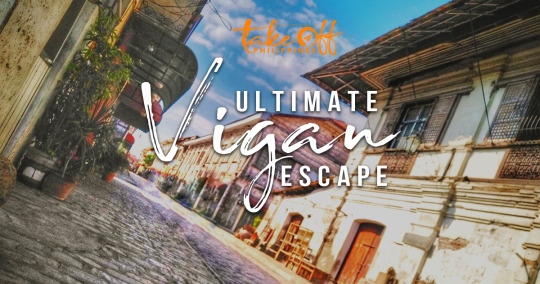
It was an exciting trip that I can’t forget as this was our first trip together with Gab going up north in Ilocos Region. It was really tiring but fun at the same time as we were simply backpackers. You can roam around the city within 2 - 3 days. We’ve got to experience The Ultimate Vigan Escape for a rough estimate of Php 5,000.
Here are a travel guide and a sample DIY itinerary going to Vigan if your planning to visit this city soon.
Where to Ride Going to Vigan?
As Vigan is located here in Luzon, we can either go for a land or air transportation. There are many Vigan Tour Package offerings on every travel agency that you could try. It may include a van going to Vigan for an easy and worry-free trip but As for us, we decided to ride a bus. We felt that the best way to enjoy the trip is to experience riding it on the public transportation.

We tried Partas Bus using their Online Booking System. There are several bus companies you can try on your Vigan trip but since convenience is our priority we ride on a Partas Bus. I recommend their good and fast service on accommodating our concern during our trip.
Express Bus Via TPLEX Fare: Php 760.00 (1 route, 5 - 6 hours travel time, 1 Stopover in between)
Riding a Partas First Class Express got us the following privileges:
Cuts your travel time by up to 4 hours! (Pasay to Laoag)
No passenger pick-ups along the road
Only one stopover
TPLEX
Terminal to terminal rates apply even for drop-offs
GPS-monitored
TV
Air-conditioned

Our Terminal Origin Address:
Aurora Blvd. cor. Edang St., Pasay City, Metro Manila. This terminal is along Tramo and alongside Five Star terminal.
Other Partas Terminal Address:
Pasay City, Bus Terminal
Aurora Boulevard (Tramo) Corner Edang St. San Roque,
Pasay City, Philippines
Telephone Number:
+63 (2) 8528194
Sampaloc Manila, Bus Terminal
Telephone Number:
+63 (2) 7433242
Cubao, Bus Terminal
816 Aurora Boulevard, Cubao, Quezon City, Philippines
Telephone Number:
+63 (2) 7278278
Bangued, Bus Terminal
Zone 7, Nangaycayan, Bangued Abra, Philippines
Telephone Number:
+63 (74) 7528262
Baguio (Temporary Station)
Convention Center, Baguio City, Philippines
Telephone Number:
+63 (74) 4448431
For the complete lists of Partas Bus Schedules, Fares and Terminals check out here.
Touring Around Vigan: Mode of Transportation
Vigan is a capital in Ilocos Sur that you can encapsulate your activities with just a day or two since its just a small town. Tourist spots along the Vigan proper are walking distance from each other but always prepare yourselves with a big bottled water and umbrella since the scorching heat of the sun is very imminent. Places like Baluarte, River Cruise, Mindoro Beach, Bantay Church Bell Tower seems to need to go for a ride since its a bit far.

The main transportation used by people here is either the tricycle or a kalesa (horse-drawn carriages). If you’re looking for a more intimate time I would suggest riding a kalesa to enjoy the scenery but if you have limited time like us I would prefer riding a tricycle.
Tricycle Fee: Php 20 - up (Depends on the distance)
Kalesa Fee: starts at Php 150
Where to Stay in Vigan?
While exploring the streets of Vigan, we’ve noticed that each corner has numerous choice of hotels, inns and transient houses. Name it! You won’t have any problems looking for one. All you have to do is to be keen in looking for more affordable and cheaper rooms from the internet.
Luckily we found the right tool to search for affordable hotels in Vigan by using Traveloka. Traveloka helps you book your hotels and flights in less than 5 minutes with just a click away. They even had promos that you can use while booking. You can check their website or download their app on Android and IOS to try it first hand on this travel booking app.
Since we want to visit all the well-known tourist spots around Vigan City with less cost but still has a decent accommodation we landed on Mel Sol’s Inn and Resort at Bantay, Ilocos Sur, a 5-6 minutes tricycle ride from Vigan Proper.
Mel Sol’s Inn and Resort
Address: National Highway Metro Vigan, Bantay, Vigan City
Phone: 0917 571 2888
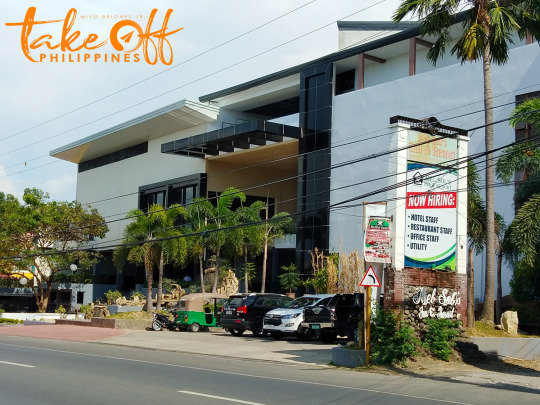




When in Vigan: Where to Go?
We arrived at Vigan earlier than expected, we didn’t foresee that our bus has a new that's why we have ample time to roam around and go to church to start our Sunday with a positive outlook.
Simbaan A Basit
Liberation Blvd, Vigan City, Ilocos Sur
It is located at the edge of a Cemetery in Vigan. According to history, the cemetery chapel was built over a century now and it is dedicated to Santo Cristo also known in Ilocos as “Apo Lakay” who is believed to save Vigan’s populace from a plague in 1756 and 1882.
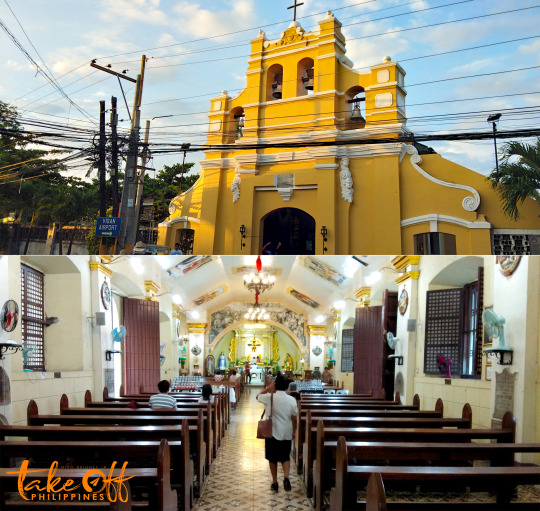
The chapel’s marker bears that the cemetery was blessed by Rev. Vicente Barreiro on Nov. 9, 1852 but the chapel’s interior now looks modern with all the repairs done through the years. Its name "Simbaan a Bassit" literally means "Small Church", since it’s a small it can only accommodate up to 100 people.

Vigan Heritage Village - Calle Crisologo
Crisologo, Vigan City, Ilocos Sur
After a mass at Simbaan A Basit, we decided to stroll around Vigan and search the well known Vigan Heritage Village wherein it was considered as a UNESCO Heritage Site as it helps out preserved the culture and history of Ilocos Region.

You can explore those old houses with a century older than me by riding a Kalesa (horse wagon) or by simply walking on the streets, as it also helps out burn some calories. It is much appreciated during the night as you can feel the romantic ambiance and stunningly beautiful light post in the area.
Mostly you can have your dinner on this streets as they have plenty restaurants to choose from and buy some cool stuffs on souvenir shops.
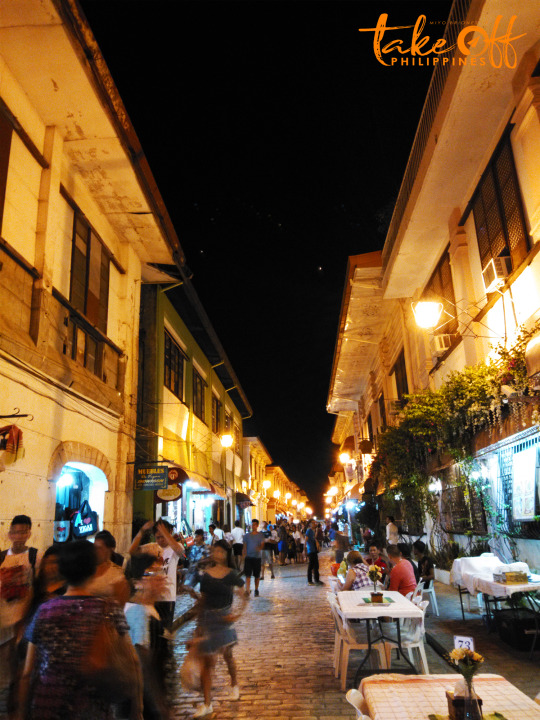
Vigan Cathedral / St. Paul Metropolitan Cathedral
Burgos St., Vigan City, Ilocos Sur
After not so far from Vugan Heritage Village you can visit again a nearby church. Vigan Cathedral, It is a Roman Catholic Cathedral in Vigan, Ilocos Sur. It serves as the seat of the Roman Catholic Archdiocese of Nueva Segovia.
According to history, The church itself was built in 1641 to replace the chapel and became a cathedral when the seat of the Diocese of Nueva Segovia was transferred here from Lal-lo, Cagayan in 1758, but not before being ravaged by a fire in 1739.

The Cathedral of Vigan, as it is sometimes called, is a stunning tribute to Baroque architecture modified by the Ilocanos to survive earthquakes. It also has a bit of Chinese influence thanks to the carvings of lion dogs beside the outermost doors.
Plaza Salcedo
Plaza Salcedo, Vigan City, Ilocos Sur

Right in front of Saint Paul Metropolitan Cathedral is the Plaza Salcedo, named after the Spanish conqueror, Juan de Salcedo who subdued the early native settlement in Vigan and established upon it Villa Fernandina for the monarchs of Spain in 1572. With this, Juan de Salcedo founded the third of many Hispanic settlements in the Philippines. Plaza Salcedo was the site of the execution of Gabriela Silang in September 1763.
According to history, the plaza was susceptible to fire during the Spanish regime. So the plan then was to create a man-made lagoon to minimize fire incidents. The original concept dating back several years ago is retained until March 2013 wherein a dramatic addition has been added to the once quiet and laid back park in between the Vigan Cathedral and the Ilocos Sur Capitol. The addition is a majestic dancing fountain.
Part 1 | Part 2 | Part 3
See below complete sample itinerary.

It’s More Fun To Experience The Wonders of Philippines! Brace yourself for more exciting, budget-friendly, mouthwatering and extreme trips.
Other Suggested Budget Itinerary:

Byaheng Norte: The Baguio Day Tour + Food Crawl Challenge
For more Daily Dose Of Eyegasmic Occurrences follow our Social Media Accounts:
Facebook Fan Page: https://www.facebook.com/TakeOffPHBlog
Instagram/Twitter: @takeoff_ph
#ilocos sur#vigan city#bagnet#longganisa#budget trips#aroundph#wheninvigan#where to eat at vigan#travelling in vigan#tourist spots in vigan
7 notes
·
View notes
Text
Mé
The Jon S. Randal Peace Page
March 3 ·
"The school bell rings and I go out to play and this little white boy comes up to me and he says, you’re a Mexican, what are you doing here? Don’t you know Mexicans aren’t allowed to go to this white school? Why are you here? And I started crying," remembers Sylvia Méndez.
Méndez remembers that day clearly, and she remembers how her parents, especially her mother, fought for her.
For Women's History Month from the Peace Page, a story about a mother and daughter.
Seven years before Brown v. Board of Education, the historic case that ended legal school segregation in the US in 1954, a Puerto Rican mother would plant the seeds that started it all.
Felícitas Méndez became a civil rights pioneer in the early 1940s, according to Remezcla.
It started when Méndez and her husband, Gonzalo, tried to enroll their children in the local all-white Westminster Elementary School.
"Like any parent, Felicitas wanted her children to receive the best education possible. However, when a relative tried to enroll her 8-year-old daughter, Sylvia Méndez, in an all-white school, she was turned away," according to Remezcla.
At that time, "by law, school districts in California segregated American Indian and Asian children. They also commonly placed Latino and African American students in separate programs," according to the Smithsonian.
The school would discriminate against the children of Méndez because they had darker skin and had a Mexican-sounding name. Their cousins, however, were accepted because they had lighter skin color and had a French-sounding name, Vidaurri (their father was part French).
The school administrator told Felicitas’ sister-in-law that "you can leave your children here, but you’ll have to take your brother’s kids to a Mexican school."
Felicitas’ daughter, Sylvia Méndez, remembers, “My aunt took a Rosa Parks stand and said, ‘I’m not leaving my kids here if you don’t take my brother’s kids!’”
Although in many communities during that time, "Mexican-Americans were considered 'White' and typically unaffected by segregation laws . . . they still faced de facto segregation and anti-Mexican sentiment. In fact, the Mendez children had attended 'White schools' until they moved to Westminster. Also worth noting is that both Gonzalo and Felicitas were U.S. citizens. In fact, Felicitas was Puerto Rican, not Mexican. All of the Mendez children spoke fluent English," according to the Education Post.
Orange County was largely segregated, according to Gilbert Gonzalez, author of the book “Chicano Education in the Era of Segregation.” Public parks, swimming pools, restaurants and movie theaters were all segregated, and houses were often sold with racially restricted covenants, stipulating that the property could only be resold to whites.
School segregation first appeared in Orange County in 1919, and by the 1940s, more than 80% of students of Mexican heritage were attending separate schools from whites, said Gonzalez. The so-called Mexican schools were designed to Americanize the students — speaking Spanish was prohibited — and also to train boys for industrial work and agricultural labor and girls for housekeeping.
The "Mexican school" the school administer was referring to was further away from the family's home. It was "terrible" remembered Sylvia Méndez - "Besides the two wooden shacks, the books were 'hand-me-downs' and the desks were 'all falling apart.'" An electric fence — which she said shocked one of her classmates — separated the school from a neighboring cow pasture.
Felicitas and her husband "were appalled by this treatment of their kids. In response, they launched what turned out to be a groundbreaking civil rights case," according to writer Leticia Chavez-Garcia.
Méndez v . Westminster was filed in March of 1945 as a class-action lawsuit against four Orange County school districts.
"They argued that separate schools violated the Fourteenth Amendment," according to the Smithsonian.
The school district at first tried to compromise – if the parents dropped the suit, they’d allow the Méndez children to attend the white elementary school. Felicitas and her husband refused, "saying the the purpose of the lawsuit was to benefit the whole Mexican community, not just a handful of fortunate kids. Felicitas’s racialization informed her fight. In Arizona, people labeled her Black. While in California, they considered her Mexican," according to Fernández.
“We had to do it. Our children, all of our children, brown, Black, and white [“bronceados, negros y blancos”] must have the opportunity to be whatever they want to be, and education gives them that opportunity,” she said.
During the trial, the school also claimed that there was a "language issue", implying that the children could only speak Spanish. However, one of the children during the trial was asked to testify, proving that the children did speak English.
"In the final ruling in April 1946, the Ninth Federal Circuit Court of Appeals in San Francisco upheld that segregation practices were unconstitutional and violated the 14th Amendment," wrote Fernández.
"In 1947 California Governor Earl Warren pushed through legislation, [making California the first state in the country to end school segregation]," according to the Smithsonian.
The case "attracted attention outside Orange County. Thurgood Marshall, who at the time was chief counsel for the NAACP Legal Defense and Educational Fund, wrote an amicus brief in support of Méndez. The Japanese American Citizens League, the League of United Latin American Citizens, the American Jewish Congress and the American Civil Liberties Union also lent their support," according to the Los Angeles Times.
The Méndez story is an American story, but one that was forgotten or denied. It was the story of one brave woman who had experienced racism all her life and just wanted the best for her children. It was a story that brought together historic figures like Thurgood Marshall [featured in previous Peace Page stories] and Earl Warren who would be instrumental in ending segregation in Brown vs. Board of Education. It even had the side story of a Japanese-American family, who leased their farm to the Méndez when they were sent to internment camps.
"They ultimately helped outlaw almost 100 years of segregation in California and set legal precedent for the Brown v. Board of Education case, filed seven years later," according to the Education Post.
Years later, Sylvia Méndez still remembers after they had won the case and she was able to finally attend that white school, when that white boy bullied her and sent her home crying.
She told her mother, Felicitas:
"Mother I don’t want to go to that white school. They don’t want us in that white school."
Her mother looked at her daughter and said, "Sylvia, don’t you realize why you were in court every day? Don’t you know what we were fighting for while we were in court?”
Sylvia said, "Yes, to get into that white school with that beautiful playground."
Her mother replied, "No, Sylvia. We weren’t fighting so you could go to that beautiful white school. We were fighting because you’re equal to that white boy.’”
"Méndez said that was the first time she understood the full weight of what her parents had achieved," according to the Los Angeles Times.
And, Sylvia did return to the school.
Years later, just before her mother died, she reminded her daughter, “We didn’t just do it for you, Sylvia. We did it for all the children…I think this is history of the United States and everybody should know about it, Sylvia . . . Sylvia, you have to go out and talk about it!’ ”
While Méndez was initially reluctant to take up her mother’s request, she relented and started a nationwide effort to educate the public about her parents’ activism," according to writer Caitlin Yoshiko Kandil.
"Felicitas died in 1998, just as the case started gaining recognition. In 2000, a new high school in Santa Ana was named after the family — the Gonzalo and Felicitas Mendez Fundamental Intermediate School. Westminster native Sandra Robbie produced the Emmy Award-winning documentary 'Mendez v. Westminster: For All the Children' in 2002, and two years later, President George W. Bush invited the Mendez family to the White House for Hispanic Heritage Month. In 2007 the U.S. Postal Service issued a stamp commemorating the case," according to the Los Angeles Times.
Because of her instrumental role in the landmark case and her activism in telling her parents' story and educating others, Sylvia Méndez was awarded the Presidential Medal of Freedom in 2011 by President Obama.
Remembering what her mother and father fought for, Méndez, said, "This is the history of the United States, the history of California. Mendez isn’t just about Mexicans. It’s about everybody coming together. If you start fighting for justice, then people of all ethnicities will become involved.”

[Photo from Sylvia Méndez School]
0 notes
Text
Double Consciousness
“One ever feels his twoness, -- an American, a Negro; two souls, two thoughts, two unreconciled strivings; two warring ideals in one dark body, whose strength alone keeps it from being torn asunder.”
― W.E.B. DuBois, The Souls of Black Folk
For many years, I’ve dodged commitment to the identity of a writer because I’ve been afraid of the backlash that would come with my words. I tend to have an out-of-body experience when I put words on paper. They become 3D powerful images, a kind of synesthesia occurs, and arrows whistle towards a target...and there are always casualties.
So, I stopped writing, avoiding opinion articles, blogs like this one, essays, controversial FB posts, because, if people actually read what I had to say beyond the armor of poetry or a creative piece, they’d feel quite different about me as a black female. And I couldn’t risk that.

2.5 Words
I’ve been conscious of myself as a black female since the third grade. Once, I had forgotten something on the PE field, and while walking back to get it, a little boy, on the other side of a fenced in playground, yelled out to me, “you're black.”
2.5 words without an ounce of hostility or error in them.
He didn’t taunt or provoke me, but when I got back to the car, I just remember feeling... wrong. Not different, just faulty or wrong somehow.
I dreamed up a clever retort too late which was, “...black is a color in the crayon box.” I guess I’ve always been a creative and insightful thinker....
This boy was 6 or 7 years old, riding a schoolyard tricycle; I didn’t even know him.
Yet, after that non-hostile experience, I was terrified to walk by that playground again.
Remember, he only vocalized his observation that I am indeed black. I still recall those sharp feelings I felt despite the words being true and true.
But I wonder why he believed it was his prerogative to point it out, to make me notice I was not the same skin color.

Safely Black
This experience was pretty much my introduction to learning I was black. Of course I knew I was not white, but I didn’t know that other people, especially kids, cared that I was not white. From there, it was being laughed at because I said “ax” instead of “ask.” One of my classmates saying, “ew, gross” because of the product in my hair, which was touched without permission. Years later, it was the shade of my knees, which are darker than the rest of my legs. Now, it’s trying to decide if I should purchase a wig for an interview or self-identify on a job application, never sure if my natural hair or shade of melanin will be the undisclosed reason behind “not the right fit.”
From K - 12th grade, I attended predominantly white, private Christian schools. Overt racism never happened to me. Yet, not once did I ever feel safe among my teachers and friends to be a black female... to fully explore what that even means. I was always hiding something.
Yes, I had meaningful friendships and positive experiences, but never as my self.
I feel that I have lived my life dressed up by a host of unsolicited tailors specializing in the way I speak, how I present myself, how I must act inside of stores, the opinions I voice, and the list goes on.
I have learned how to become invisible and nondescript so that I can be “safely” black.
And it’s been to my detriment.

An Angry Black Woman
Many people are feeling shocked by the recent events caught on video and shared via social media. Without me even mentioning the race of this little boy, it will be inferred that he was white. Because, even if some “don’t see color,” everyone knows that Asians, Hispanics, Native Americans, Caucasians, and every other group of people, have worked very hard to point out how we are not the same skin color, and somehow a lesser pedigree of human, for generations.
Until a few days ago, I had remained pretty quiet on the topic of racial injustice--always looking for ways to share my experiences, relate my double consciousness to friends, while not offending anyone.
But right now, black people are being threatened and murdered on live cameras by white people.
And for some reason, despite my coveted relationships with white friends, for several years, I have nursed a fear that it would damage something between us if I commented on any news story about race.
I’ve believed it would alter our friendship if I became a fist-raised Black Power advocate. It would make things awkward if I were to steadily post black injustice on my newsfeed. That, if I said I’m so angry that police are killing little boys and young men, I would be viewed as, wait for it, an angry black woman. Nevermind the truth that I feel wrecked from my core; I’d just rather not make any waves.
That’s what’s been on my mind. Not exclusively the horror of the murders I’ve been stockpiling in my conscious since a young girl, but the fact that I actually know people who would eventually wish I’d stop posting the “angry racist stuff,” and stop trying to “take us back to the past.”

Bullets of Truth
But this is my own mess, my own web of nonsense because I have cultivated and catered to this twisted sense of peace among all men when I shonuff’ know there ain’t been no peace cuz no cops are walkin’ around viewing my black brothers as men.
My shame is that I know I have denied myself and my friends the conversations about what it really means to be black in America BEFORE we were shown these awful attacks. It’s not like I didn’t know it was happening.
But I have been so afraid to put my bullets of truth out there--mainly because you learn, way back in elementary school, when you are black, you just don’t talk about being black with white people because they will somehow make it about how they feel wronged and attacked. You just lock up that door and know what you know.
Except, I can’t feel anything but sick lately-- like I have to projectile vomit my self up from the place I’ve swallowed my self to become fiercely black, once and for all, and unabashedly own what that little boy “accused” me of being.
To finally say out loud, ”No, I am not the whitest black friend you know.”
To shoot down, “You sound white on the phone.”
To reject, “You don’t act like other black people.”
To refuse, “You’re very articulate for a black person.”
To say, “I’m disinterested in being the official tour guide of Black History month” because to be honest, I am still trying to understand what it means to even be black.
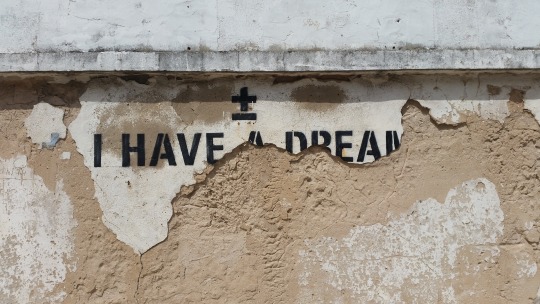
Black in America
My mother’s hard decision for my life was to go the route of private education on the other side of town, or attend the public schools we were zoned for in a less desired part of town (by no fault of the town, because lines were redrawn on purpose.) The outcome was me, immersed in a homogenous environment where I got a pretty decent education, but striving to fit in, losing my cultural heritage, pride and identity in progressive stages to the point my mother actually asked me in high school did I want to be white. Whenever I spent time in the black community, I couldn’t quite find my foothold there either, because they too thought I was “trying” to be white.
I don’t regret her choice, but I, as a parent, now know what choosing the first one meant. There are times I am not sure who I am when it comes down to the spectrum of black identity, and it’s sad, confusing, and alienating.
And honestly, I, along with many in my community, don’t have enough moments of peace to experience true self-discovery, to nurture who that person really is.
As soon as we’re proud of Barack and Michelle Obama or overjoyed about the historical Black Panther film or inspired by the shocking legacy of Katherine Johnson or choose to kneel with Colin Kaepernick or feel paranoid by the Confederate flag or unified under the banner of #BlackLivesMatter -- a whole lot of people, including the president of the United States, feel it’s their prerogative to tell us who we are for us [re:thugs]--and that narrative is never, ever good.
We are constantly trying to push it out, fighting cops for our kids’ lives, warding off suspicions, navigating extreme violence and poverty in our own community, and trying to prove our value and worth for school and career, while raising our babies to be proud of their skin color, our beautiful brown babies, who, as soon as they graduate Kindergarten, will cease to become non-threatening.
By the way, we are processing all of this, while watching white people protest masks and quarantine with assault rifles. In 2014, Tamir Rice was shot dead for having a toy gun. He was 12.
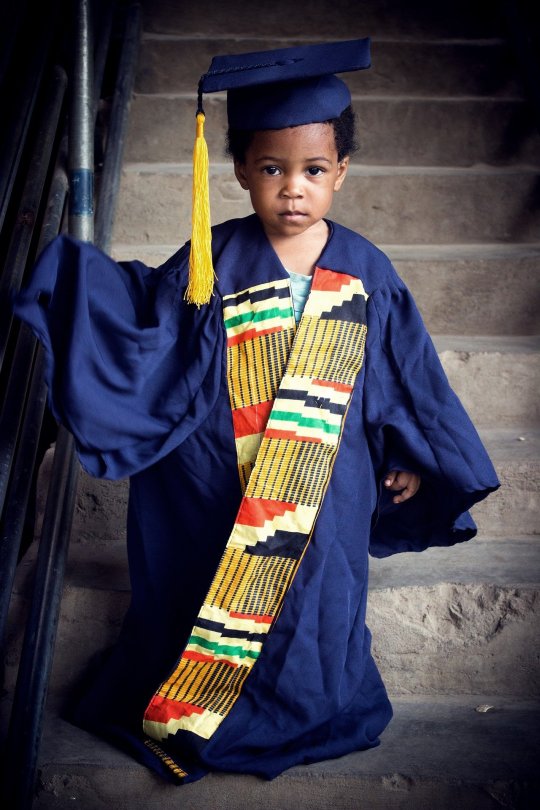
Under the Radar
So, I’ve come to this point, feeling like it’s crazy and impossible that I’m literally living through some of the things in my mother’s lifetime, that I must raise my daughter with a keen awareness that not all people are treated equally, even when the Constitution declares we are.
That I must actually teach her that even though the “colored only” signs are gone, the stone place of men’s hearts from where the words originated still exist. And they will mean it and enforce it with all the boldness of the Jim Crow era, just under the radar.
I’ve been trying to understand why in the world I am being so affected by this now, so much that it alters my mood and impacts productivity, why I feel like I have to force myself to be positive and hope for change. Is this what it also means to be black? To stir up my ancestors’ concoction of will, determination, resilience, and sing my own kind of Negro spiritual, and march my way to freedom? No wonder they were so strong!
I am cognizant of the fact that there are many great white men and women who work in the armed forces, and in law enforcement to protect all people in America. And I know there are those have worked in the past to abolish laws and helped to enact civil liberties for people of color.
I also know that it took the braveness from the likes of Frederick Douglas and Harriet Tubman and W.E.B. Dubois to shed light on the black experience...so together these powerful people could push change forward with a vengeance.
I am nowhere near as proficient in elocution as they, but this is my piece. I’m finally saying something about what it means to be black in America, but I am also feeling like that’s not enough.

The White Wall
I have many friends who are parents and who are educators and who are the complex cocktail of both.
Black people have not ever wanted to educate their white friends about what this terror feels like, and honestly, we shouldn’t have to because-- internet.
But I am realizing, with my own education in a predominately white environment, I didn't learn anything from my teachers about me and my world.
Nothing truly existed beyond the white wall--white writers, white poets, white leaders, white composers, white heroes, and Martin Luther King Jr.
From K - 12th grade, what I learned about the realities of being black wasn't taught by teachers or textbooks. The little I did learn was by being in the midst of my community, and eventually reading and pursuing and chasing after knowledge.
Therefore, it’s positively unrealistic to imagine that white people know much at all about the black experience. And both public and private education do not place importance on real diversity. Now, with the visual horror of Ahmaud Arbery and George Floyd, I venture to believe, for many white people, these past few weeks have been pretty much earth shattering.
But why is knocking down this wall and learning about the black experience (and other races and ethnicities) important?
When a white person’s basic lifestyle is free from external conflict, the tendency is to want to live there and only there. Problematically, she will grow increasingly out of touch with the world beyond her (and perhaps surrounding her if people of color have come into her world). But she will fail to see the good and the bad, except for this: negative media will only show her the bad, and tell her how to think, and what to believe about everyone else who looks different than her, subliminally, judgmentally, until eventually she behaves in the audacious, debased manner of Amy Cooper, a white woman who knew what the fatal consequences would be for a black man if she simply called the police to say she was feeling threatened, and to have had the presence of mind to wield it like a weapon.

A Gaping Chasm
Learning about the black experience is important because Amy Cooper probably did not wake up believing she was a racist or even had a racist bone in her body. But she knew that she was white and he was not, and in her anger, decided to weaponize her whiteness by calling the police on a black man, which depending what “bad apple” was on duty, could have ended his life--too.
That is how it works. It doesn’t always end in loss of life, but always ends in loss of masculinity, loss of spirit, loss of soul, loss of faith, loss of trust; it just ends in loss.
When you don’t fight to change the system, you become part of the system.
So, unless (or until) a white family has been very intentional, they and their children are not learning about the black experience.
Even when teaching my child about the origins of America and the Civil War and Reconstruction, I had to be intentional, essentially going back to school because there are things that were blatantly omitted from my years of learning and were still being omitted for hers if I did not break out from the wall.
To put this in perspective, I was in college when I learned there were accomplished black leaders besides Martin Luther King Jr. and Rosa Parks. I was in my 30s when I heard black women and NASA in the same sentence together.
My mom had Black America encyclopedias, and she wore her Afro proudly with a fist in the air, but she trusted my education to the school system--the private, Christian school system, and they emptied out all of the other crayons in the box, and asked me (and my classmates) to only color with the white crayon.
So, for white families, between choice of schools, places of worship, and by not having or seeking out any predominately black cultural experiences, there is a gaping chasm between us.
One that I’d like to lay a log across for my part.

Gateway for Change
Anyone who knows me knows I’m a sucker for kids. I’ll bleed for them. I’ve spent the better years of my life surrounded by them. And from them, I’ve learned they are not afraid to learn something new when it’s presented to them in a digestible manner. I’ve been thinking a great deal about kids lately--my nephews and nieces, my former English students and chess kids, my friends’ children....They have heard the chatter, seen our reactions, and may have even seen the same videos on YouTube.
All of these kids, our kids, are being shaped by this society, and they will one day become adults who must interact and deal with each other politically, socially, emotionally, physically, spiritually, economically, and mentally.
So who is educating them? Who is explaining empathy and justice and teaching love and acceptance? One thing this virus has taught our nation is that parents are capable of teaching their children too. No matter how great your school system is, they are not going to teach your children about race relations with any consequence.
Education is the single most important gateway for change. Yes, there are people who will perpetuate ignorance regardless because they are blocked in by their incestuous beliefs, but for those who wish to break out of that crippling heritage or emerge from the silos of their communities -- with empathy and insight, you have to learn something new and share the wealth.
You have to know what’s being taught inside the homes of black families, multi-racial families, Arab families, Asian families, and most recently, the Navajo nation. Buy books with diverse characters by diverse authors --for yourself, your children, your students. Watch films with diverse casts. Find positive images and media that celebrate the success and vitality of black excellence.
Listen to the lessons and conversations we've been having amongst ourselves for generations and still teach today. White society is not a bad society. Black society is not a bad society. We are not going to see eye to eye on many many things, but we can agree that every life is valuable.
I do not represent every black person, nor does every black person hold my same views.
But absolutely, we do not live or experience life the same way as our white friends and family. This truth is not a victimhood or disadvantage we seek to revel in or exploit, nor does it devalue the privileges others know and experience. Within our own community, we definitely have very real problems to address, but right now, daily life should not be a mental obstacle course that’s filled with active minefields laid out for us everyday.
Lately, it just feels like no matter what we do or don’t do, the fatalities are adding up, and wicked people in this country are treating the taking of our lives like points in a video game.
As you think about these words, and listen to the stories of these young black men, who are being hit the hardest with racial injustice, dare greatly to share widely within your community.
youtube
“But we do not merely protest; we make renewed demand for freedom in that vast kingdom of the human spirit where freedom has ever had the right to dwell:the expressing of thought to unstuffed ears; the dreaming of dreams by untwisted souls.”
― W.E.B. DuBois
Pixabay photos used by permission. Video sourced by New York Times.
0 notes
Text
Contributor Susu is back with an ode to her heritage.
My Hispanic Heritage in Film: The Old, The New, and The Internal Spark
I sit here with you, finally, after weeks of pondering the threads that might tie my next movie list together. Last month was National Hispanic Heritage month and as a daughter of Spanish-speaking parents, I humbly and proudly begin there, on that corner of a gorgeous and intricate tapestry of humanity and culture.
I am woven into the tapestry with thread the color of Cuba, which is where my parents and a long line of ancestors were born. Things B.C. (before Cuba) are still a mystery. My DNA shows no sign of indigenous blood, which means that the threads extend across the Atlantic to Europe and Africa. But that’s another story. For now, and for about 200 years, with the exception of my maternal grandfather, my family tree and its history is firmly rooted in the westernmost province of Pinar del Río, Cuba.
As simple as that should be, as singular a representation of culture it might offer, it is not. I discover that, as I try to choose the handful of movies to share with you here, there are in fact several Cubas that express themselves to me in life and in film.
The first is the mythological Cuba, the one that lives behind the mist of nostalgia that envelopes the pre-Castro-Revolution generation, the Caribbean Camelot set in lush mountainsides, swaying to the sound of town sociedades, and thriving with the hope of a sunlit main street. It is, in my mom’s words, the image of un pueblo alegre.
The second is the new Cuba, the one I visited for the first time 15 years ago, which is decidedly “other.” It’s an “other” so drastic that my mom, having been gone for 40 years, didn’t recognize it as she moved through its haunted streets again. While described by many as being “frozen in time,” the phrase is inaccurate. What’s frozen is still. Preserved. And that’s not the truth of Cuba. What might be the country’s motto is injected into every conversation: No es fácil. It’s not easy. The island is structurally compromised by lack of resources and culturally limited by the lack of ideological flexibility, yes. But make no mistake, it not frozen. It is living, breathing, moving forward.
In writing this post and examining my movie list, I discover a third, more personal place. An internal spark. My guess is that it lives and breathes in all sons and daughters of immigrants. I don’t think of it, any more than I think of blinking or scratching an itch. But it’s there, at work all the time, activated when I switch from English to Spanish in conversation, or when I hear Salsa and absolutely…must…dance.
All three places, the old, the new, and the internal spark, are my heritage. Here are a few of the movies that shed some light on them:
The Lost City (2005), directed by Andy Garcia, written by Guillermo Cabrera Infante: “Everything I love is in this movie, including my kids.” These are Andy Garcia’s words while promoting the film in interviews. My words would be “epic poem.” The story is set on the island itself in the year leading up to Castro’s revolution in 1959, and is centered on the conflicting ideologies of three brothers. Among the elements I love most are the cast of mostly Cuban actors, and a soundtrack of original, classical music that reduces me to tears.
Before Night Falls (2000), directed by Julian Schnabel, written by Julian Schnabel, Cunningham O’Keefe, and Lazaro Gomez Carriles. Based on Reinaldo Arenas’ memoir of the same name (Antes Que Anochesca), the story visits Arenas’ struggles from destitute childhood to homosexual manhood in an unforgiving culture of fear and repression. To know that Arenas began writing this book after he was diagnosed with HIV, knowing that his life would end and how he would end it is its own tragedy and triumph. Javier Bardem as Arenas is flawless. Keep your eyes open for Johnny Depp and Sean Penn, who looks so much like one of my uncles I had to do a double-take.
Strawberry and Chocolate (Fresa y Chocolate) (1993), directed by Tomas Gutierrez Alea and Juan Carlos Tabio, written by Tomas Gutierrez Alea and Senel Paz. I’ve lost count of how many times I’ve popped this movie into my DVD player. It stars a delicious Jorge Perugorría as gay man and intellectual, and Vladimir Cruz as fiercely heterosexual male and devoted son of the communist revolution. I love every single thing about this movie, beginning with the fact that it was actually filmed in Cuba. I don’t know how the cast was able to film this story. The themes and conversation between these characters is strictly forbidden by the state, prompting the authorities to ban the movie on TV for 20 years after it was released in theaters. It is the only Cuban film ever to have been nominated for an Oscar and oh yeah, it was produced by Robert Redford.
Guantanamera (1995), directed by Tomas Gutiérrez Alea and Juan Carlos Tabio, written by Eliseo Alberto, Tomas Gutierrez Alea and Juan Carlos Tabio. Peruggoría stars in this film as well, but this time as a truck-driving macho man with a sexual partner at every stop along his route. The story, though, is not just about him, but about Cuba itself. If you want a story of how things “go” in modern-day life and the spirit in which the people on the island approach their struggles, this would be the one to watch. This is another one I’ve countless times for its authenticity, absurdity, and laugh-out-loudness.
Chef (2014), directed and written by Jon Favreau. I admit it. More often than not, I watch a movie from the comfort of my couch. Which means I fall asleep. My commitment to the movies and creativity forces me to watch a film again and again until dammit, I get through the thing. This, however, was not the case with “Chef.” It is a joy, a gem, and a riot. To add to Jon Favreau’s signature style and conversational wit, we have John Leguizamo as his character’s partner, a Cuban sandwich truck as the “dream,” and a few moments of perfection from another favorite, Bobby Cannavale, who delivers the word “lechón” like a philharmonic delivers Mozart. Cannavale is half-Cuban, which explains his perfect pitch.
The Motorcycle Diaries (2004), directed by Walter Salles, written by Enesto “Che” Guevara, Alberto Granado and Jose Rivera. As most know, Ernesto Guevara is a complex figure, received by some as hero and by others as cold-blooded assassin. In silent deference to my tribe I rejected this particular film for a long time, believing it would depict a romanticized version of a man I didn’t want to know or forgive. In the end, my curiosity and desire to understand took over and years after it was released, I watched it. You don’t need a critique from me to know it’s a wonderful film. I am glad that I watched it and would like to believe that as a young man, Guevara’s intentions were true, and that he was, like many in power, tragically derailed by his ego. Gael García Bernal (as Che) and Rodrigo de la Serna (as Alberto Granado) are magical together.
Spanglish (2004), directed and written by James L. Brooks. To start, I am not an Adam Sandler fan but was happily surprised by his role as quietly desperate father, husband and chef. I choose this movie for this list, though, because of Paz Vega and Shelbie Bruce, who play immigrant mother and American daughter in ways too familiar and plentiful to enumerate. Translating conversations between my mom and non-Spanish-speaking folks is the story of my life, and this movie handles that reality with humor, grace and dignity. Plus, Cloris Leachman. I could not love a woman more.
Dance With Me (1998), directed by Randa Haines, written by Daryl Matthews. This one’s a feel-gooder, a love story with the requisite gorgeous people who don’t get along at first but find each other later. There’s nothing really different about this film’s themes and conflicts, nor is the acting a thing of Oscar-worthy proportions. But there is a scene…in a club…with Albita, a famous Cuban songwriter/singer, performing…where the Salsa just…takes OVER. I‘ve watched that scene a thousand times. It is pure joy. I saw this film in the theater with my mom. In the middle of that same club scene, just as I wondered whether my dad – a fantastic dancer in his youth – had danced like that, my mom pulled me close and said, “Así era en Cuba.” “That’s how it was in Cuba.”
The Mambo Kings (1992), directed by Arne Glimcher, written by Oscar Hijuelos and Cynthia Cidre. The book “The Mambo Kings Play Songs of Love” by Oscar Hijuelos was awarded a Pulitzer Prize for Fiction. And so, imagine my surprise when the movie version was a travesty. I don’t know what would have saved it or made it right, but I believe it begins with casting someone other than Armand Assante, whose rendition of Cuban Male is a constant sucking in of the cheeks and strutting like a peacock. Everything about him was wrong, from his accent to his sense of rhythm, and the movie suffers dearly for it. And yet, here it is on my list because Antonio Banderas does do justice to his role, because my beloved Celia Cruz appears in several scenes, and because of a perfect moment in a club scene in which a man, an amazing dancer, jumps out of his chair and begins a conga line. It is everything.
Vicky Cristina Barcelona (2008), directed and written by Woody Allen. I don’t have one heck of a lot of patience for Woody Allen’s characters. There, I’ve said it. And so again, I didn’t run to the theater to watch this when it first came out, even though I would watch Javier Bardem and Penélope Cruz read the newspaper. But one day I watched. And holy cow, when Bardem’s character proposes a trip to Oviedo, I nearly broke a kneecap as I hurled myself closer to the screen. You see, Oviedo, a town in northwest Spain, is where my maternal grandfather is from. I know close to nothing about him. He died when my mom and her siblings were too young to remember him. Oviedo is the one item on my bucket list, my mystery, and a branch in my tree that I hope to learn more about one day.
This post is dedicated to my father, Oscar, who passed away 37 years ago, and who is fully responsible for the part of me that absolutely…must…dance.
◊
Susu is getting her movie fix here and I couldn’t be happier about it, but she writes regularly at Sin Zapato, a barefoot blog wherein she shares insights on being. Take a look at it here or via the link on this blog’s home page.
My Hispanic Heritage in Film: The Old, The New, and The Internal Spark Contributor Susu is back with an ode to her heritage. My Hispanic Heritage in Film: The Old, The New, and The Internal Spark…
2 notes
·
View notes
Text
The Most Reliable Audio Publisher

The biggest population enjoys watching and listening to music while the rest of it is made up of book-lovers. Books have a wide variety as people tend to write about any topic and different writers stick to different topics. It is not easy to carry a book all the time. We now have a better digital way of consuming book’s content and that is audiobooks. This has become the go-to option to many of us. There are certain sites or online companies that avail these audio books to the public. Most of them have the right content but there are still those that will not fully satisfy you. Therefore, you have to know some of the tips that you should consider for you to have access to the best audiobooks available.
The first thing is to consider this site that has a variety and has a lot of books. Readers always want to have their current read which means they need a new book all the time. If you need a lot of books you need to get them from a site that provides people with enough book narrations. It is good to examine the types of audiobooks that are available and how often they are posted.
You have to consider the cost. There are those that have the subscription options where you get to pay monthly for a certain number of books. Monthly plans are quite affordable to those that may need a continuous supply of audio books.
Those who do not wish to be members should still be allowed to listen to audio books and so, you need a site that do not have such restrictions. In order to save money, you need to look for companies so that you can have options and pick the best in quality and price. You also have to check your benefits such as having the permission to listen offline. Such added benefits ensure that a listener is able to access the book even without network. You might want to check this website at https://www.huffpost.com/entry/hispanic-heritage-month-childrens-books_n_5b9fada1e4b013b0977cfdaf for more info about books.
There are sellers that take advantage of buyers and decide to avail incomplete books. Black stone publishing usually avails to people the best audiobooks and so, those are some of the providers that you can rely on. Craig Wasson is one of the best narrators and you should probably consider his narration next time you are buying an audio book. A good audiobook is one that you can listen without any constraints such as inaudibility, misspelt words or low volume and so, good narrators are quite important. You can check sites that rate audio booksellers for you and you can choose to work with the ones that have high ratings. Learn more here!
0 notes
Text
DCTheatre & Latin American Heritage Month
In 1968, Felix Longoria, a Chicano, was killed in action in the Philippines during WWII. When his body was returned home to Three Rivers, TX, local racists insisted he be buried on the “Mexican side” of the cemetery. The disrespect of the National Hero’s body and ancestry, gained national attention, and Private Felix Z. Longoria was buried at the Arlington National Cemetery, making him the first fallen soldier of Mexican-descent to be interred there. President Lyndon Johnson observed Hispanic Heritage Week for the first time in 1968, and on August 17, 1988, President Ronald Reagan enacted Hispanic Heritage Month into law. Ethnic and racial tensions in Three Rivers continue to this day, and the confusion as to what a Hispanic or a Latino/a/x is continues as well.
youtube
(Video: Independent Lens, THE LONGORIA AFFAIR, Video Extra, PBS)
HispanicHertiageMonth.Org says on their website, “Many Hispanic Americans trace their roots to the cultures of the indigenous peoples of the Americas – including the Arawaks (Puerto Rico), the Aztecs [exonym] (Mexico), the Incas (South America), the Maya (Central America), and the Tainos (in Cuba, Puerto Rico and other places). Some trace their roots to the Spanish explorers – who in the 1400s set out to find an easier and less costly way to trade with the Indies. Other Latinos trace their roots to the Africans who were brought as slaves to the New World”. Though there is varying opinion on what the name of the celebration should be (Hispanic Heritage Month vs. Latin American Heritage Month), the celebration remains the same: every year on September 15 through October 15, the United States of America celebrates the histories of Latin America including independence from Spain, and the accomplishments of Latin Americans who helped shape the United States into the nation it is today. Some argue that “Hispanic Heritage Month” praises the Hispanic colonizers, and that “Latin American Heritage Month” would be a better name as it encompasses all Latin Americans (the Indigenous, the African, the Asian, and the European) regardless of their racial background. For the purposes of this blog post, the acronym LAHM (Latin American Heritage Month) will be used to honor the descendants of the Indigenous people of the American and African continents that have been affected by the colonization.
Collectively, in the DC Metropolitan Area, the Latina/o/x and Latin American population is between 9 and 14%, depending on the study. LAHM is a perfect time for DC Theatre to feature their Latinx (a gender-neutral term for Latino and Latina that embraces gender non-conforming people of Latin American background) playwrights, directors, designers, actors, and technicians. The Women’s Voices Theatre Festival is also running during LAHM; a perfect opportunity to feature Latina Playwrights- something Arena Stage and Pointless Theatre Company must have considered when planning their season. Between September 15 and October 15, theatreWashington has tracked 62 productionsthat will be playing. From these productions, 7 playwrights, 4 directors, 4 costume designers, 1 light designer, 2 composers, 2 sound designers, 3 music directors, 5 set designers, 2 puppet designers, 2 projections/media designer, 1 other designer, 1 panelist, and 27 actors of Latin American or Hispanic heritage will be featured.
I want to take the time to celebrate these artists. If I mention you in this post and you wish to not be named or if I misidentified your ancestral nation of origin, please let me know and I will kindly remove you from the list or edit your profile. I will say it took me a while to find out where all these artists are from, and some I couldn’t find, but all of this came from a place of love. For the most part, I did not mention any of these Latinx artists’ racial background, because I do not decide what race these folks are, only they and their family history can do that. Amo a todxs mis artistas Latinoamericanxs. ¡Que viva América!
There were three companies who deserve special commendation because of their commitment to the inclusion of Latinx and Hispanic Artists during LAHM: Arena Stage, GALA Hispanic Theatre, and Pointless Theatre Company. Though these three companies produced completely different shows in so many ways, they are providing US Theatre the diversity and inclusion it needs.
This first show, I have not seen, but they have given 17 jobs to Latinx and Hispanic artists. Arena Stage features playwright Karen Zacarias’ (Mexican-descent) telenovela-style comedy DESTINY OF DESIRES, running until October 18, directed by Jose Luis Valenzuela (Mexican-descent). There are 4 Latinx or Hispanic creative team members including: light design by Pablo Santiago (Mexican-descent), Composer Rosino Serrano (Spanish-descent), sound design by John Zalewski (Brazilian-descent), and set design by Francois-Pierre Couture (Quebecan-descent); and there are 11 Latinx or Spanish actors: Esperanza America (Mexican-descent), Oscar Ceville (Panamanian-descent), Gabriela Fernandez-Coffey (?-descent), Carlos Gomez (Cuban-descent), Fidel Gomez (Mexican-descent), Rayanne Gonzales (?-descent), Castulo Guerra (Argentine-descent), Marian Licha (Puerto Rican-descent), Nicholas Rodriguez (Mexican-descent), Elia Saldana (Mexican-descent), and Rosino Serrano (Spanish-descent). That’s a lot of Latinx and Hispanic Artists! It’s so amazing that this show is existing in my theatre community! My only concern is that it is not accessible to Latinx audiences. This is Arena Stage after all, and the ticket prices are higher. With $40 for a low priced seat, it may be too expensive for some Latinx families to make the trip to watch DESTINY OF DESIRES. I have seen some coupons going around, so maybe they found their way to some Latinx folks who needed them. My hope it to watch the show before it closes so I can experience the majesty that is DC Latinx Theatre!
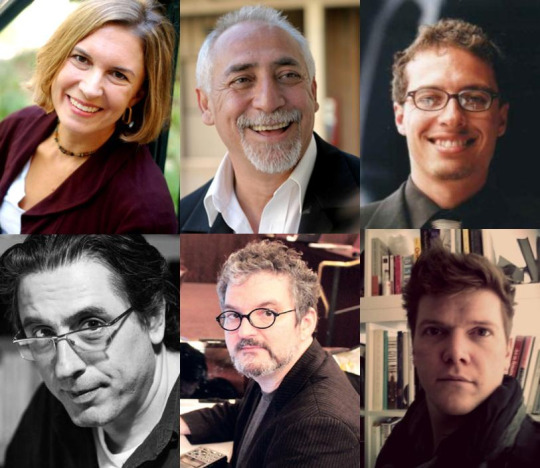

(Latinx Artists from Arena Stage’s DESTINY OF DESIRES: Karen Zacarias, Jose Luis Valenzuela, Pablo Santiago, Rosino Serrano, John Zalewski, Francois-Pierre Couture, Esperanza America, Oscar Ceville, Gabriela Fernandez-Coffey, Carlos Gomez, Fidel Gomez, Rayanne Gonzales, Castulo Guerra, Marian Licha, Nicholas Rodriguez, and Elia Saldana.)
[[I would like to extend a special thanks to a non-Latina, Molly Smith- Artistic Director of Arena Stage and one of the Founders of the Women’s Voice Theatre Festival- who took the time to celebrate the Latina playwright during Latin American Hertiage Month. She did not have to do that… most Artistic Directors didn’t. But she had faith in Karen Zacarias and in Latinx Theatre. And now this show is Helen Hayes Recommended, which will surely produce a lot of first time Latinx nominees and winners at the next Helen Hayes Awards. I can’t wait to see that!!!]]
The next show I did see. This show’s existence in DC theatre was so important, though it’s placement during LAHM was kind of off putting to many Latinx artists I’ve spoken to. GALA Hispanic Theatre featured an adaptation of Federico Garcia Lorca’s (Spanish-descent) YERMA, by playwright Fernando J. Lopez (Spanish-descent), directed by Jose Luis Arellano (Spanish-descent). There were 5 Spanish-descent Creative Team members including: costume design by Silvia de Marta, set design by Silvia de Marta, Composer Mariano Marin, sound design by Mariano Marin, and projections/media design by Alvaro Luna; and 5 Spanish or Latinx Actors: Mabel del Pozo (Spanish-descent), Iker Lastra (Spanish-descent), Eric Robledo (Mexican-descent), Luz Nicolas (Spanish-descent), and Natalia Miranda-Guzman (Chilean-descent). The off putting-ness comes in that GALA Hispanic Theatre is celebrating Spanish Heritage rather than Latin American heritage during LAHM by producing a play by a Spanish playwright rather than a Latin American playwright. However, when taken out of that context, it is so important that GALA is producing work by a non-Anglo playwright during LAHM. It’s so important that GALA is providing opportunities to migrant workers and local Latinx and Spanish artists. It’s so important that GALA is unapologetically doing a show in Spanish during LAHM. More companies should be doing shows in Spanish… especially during LAHM. Though GALA’s ticket prices aren’t as high as Arena Stage’s, they are still rather expensive for Latinx folks who may be struggling to pay the rent, but who would appreciate hearing a story in a language they can fully understand and appreciate. This show, another Helen Hayes Recommended production, was beautiful, creative, and really intense. Very much like everything else GALA Hispanic Theatre does. Though Lorca might not have been the best way to celebrate LAHM, his presence in DC Theatre was incredibly appreciated… This play has actually inspired me to look into the writing of another poet: Nezahualcoyotl, a Tezcoco leader who was known for his poetry. Lorca, though not a Latin American, has inspired a Latin American to further the Latin American Theatre…. which to me is such a beautiful and needed thing.
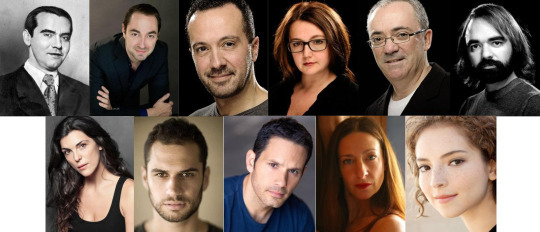
(Latinx/Hispanic Artists from YERMA: Federico Garcia Lorca, Fernando J. Lopez, Jose Luis Arellano, Silvia de Marta, Mariano Marin, Alvaro Luna, Mabel del Pozo, Iker Lastra, Eric Robledo, Luz Nicolas, and Natalia Miranda-Guzman)
The next show actually hasn’t opened yet, but I am so excited for it! Pointless Theatre features playwrights Mel Bieler (Brazilian-descent) and Patti Kalil (Brazilian-descent)’s GIMMIE A BAND, GIMMIE A BANANA: THE CARMEN MIRANDA STORY, directed by Roberta Alves (Brazilian-descent). There are 5 Brazilian-descent Creative Team members including: Music Direction by Patricia Vergara, set design by Mel Bieler and Patti Kalil, and puppet design by Mel Bieler and Patti Kalil; and 3 Latinx actors: Sharalys Silva (Puerto Rican-descent), Belen Oyola-Rebaza (Peruvian-descent), and Philip da Costa (Brazilian-descent). This story is about Carmen Miranda, a controversial Latin American icon who is quite possibly the mother of the Latina Bombshell stereotype in the US, but is known abroad as someone who appropriated Afro-Bahia women’s clothing and style of music (something that to white Brazilians was seen as distasteful to the white image Brazil intended to show abroad.). It’s fascinating to see that Afro-Latina actor Sharalys Silva will be playing Carmen Miranda, and that the play features other Latinx artists of color. To me, it is reminiscent to what is being done with Hamilton on Broadway, where artists of color are playing famous white folks; likewise Latinx artists of color are playing famous White Brazilians. Having a Black woman reclaim Miranda’s iconography for the community is a beautiful message I take from it. I’m very excited to see this show… plus puppets! So yeah, I’m definitely catching this show! And so should you! Tickets are only $20-$25 and I’m sure there are coupons rolling around!
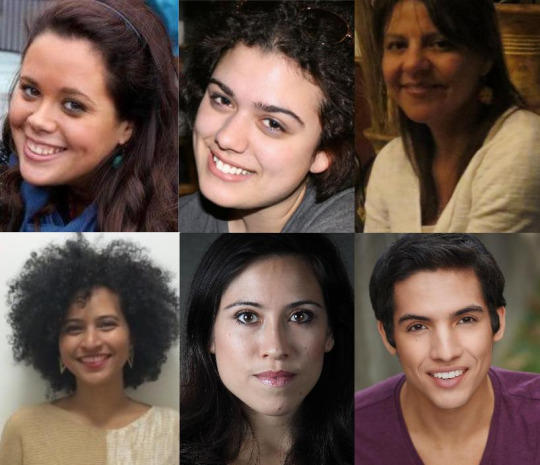
(Latinx Artists from GIMMIE A BAND, GIMMIE A BANANA: THE CARMEN MIRANDA STORY: Mel Bieler, Patti Kalil, Patricia Vergara,Sharalys Silva, Belen Oyola-Rebaza, and Philip da Costa. Picture Not Found: Roberta Alves.)
The In Series’ LATINA SUPREMES featured Music Directors Mari Paz (Cuban-descent) and Diana Saez (Puerto Rican-descent), as well as Actors Patricia Portillo (Mexican-descent), Mari Paz (Cuban-descent) and Diana Saez (Puerto Rican-descent). I was not able to watch this show sadly, but the cabaret-style aspect of the show intrigued me. I love diversity in theatre style. I was a bit confused by the “Supremes” part of the title of the show, considering there was a mix of Latina women songwriters that were slated to be featured. I imagined that, much like their namesake, the “Latina Supremes” would be Black women. I imagined La Lupe, Sheiela E., Celia Cruz, and Susan Baca. Mariah Carey, Kelis, Esperanza Spalding, and Sabi. AFRO-Latinas. But that’s just what I imagine when I hear the word Supremes. The result, I’m sure, was beautiful. I really wish I would have had the chance to see it. (Did anyone I know catch this show?)
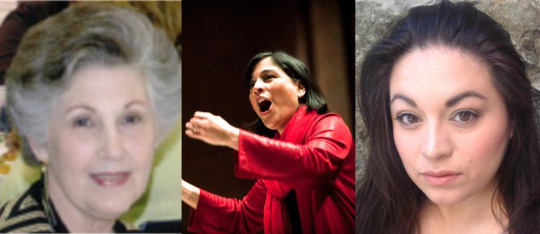
(Latinx Artists from LATINA SUPREMES: Mari Paz, Diana Saez, and Patricia Portillo.)
The next show, I sadly missed, is Theatre J’s QUEEN GIRL IN THE WORLD. This show featured 4 Latina Creative Team members including: costume design by Ivania Stack (Costa Rican-descent), projections/media design by Ruthmarie Tenorio (Mexican-descent), set design by Ruthmarie Tenorio (Mexican-descent), and other designs by Paige Hernandez (Cuban-descent). I think it is awesome that this non-Latinx play provided 3 Latinas work for LAHM and the Women’s Voices Theatre Festival. More companies should have done that! Even if you can’t produce a Latinx playwright, you should still hire Latinx artists… especially to feature during LAHM. It’s no surprise that it is Theatre J who provided these jobs. They do awesome show by diverse artists all time and have provided many opportunities to diverse artists.
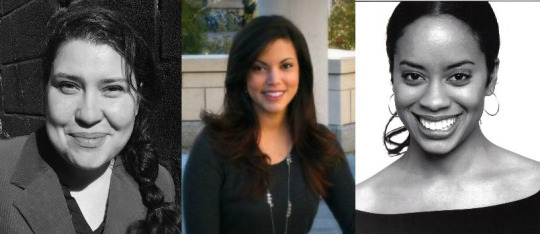
(Latinx Artists from QUEEN GIRL IN THE WORLD : Ivania Stack, Ruthmarie Tenorio, and Paige Hernandez)
I haven’t caught this next show, but I still have time- it runs until November 1st! Olney Theatre Center’s BAD DOG features 3 Latinx artists: costumes design by Ivania Stack (Costa Rican-descent); and two actors Gladys Rodriguez (Puerto Rican-descent), and Carlos Saldaña (?-descent). This show doesn’t have Latinx themes but it’s great that these Latinx artists were able to be featured this month.
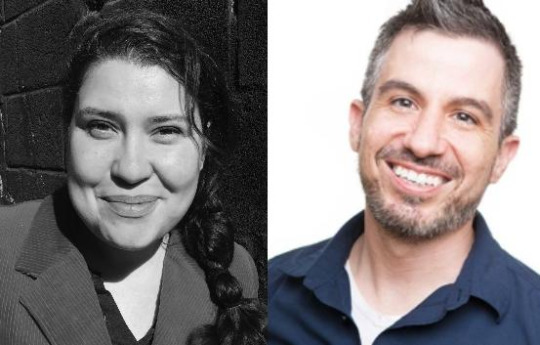
(Latinx Artists from BAD DOG: Ivania Stack, and Carlos Saldaña. Picture Not Found: Gladys Rodriguez)
Admittedly I haven’t caught most shows, but that’s just cuz theatre is expensive. I tend to just go to free or PWYC events, unless ticket prices are reasonable. This next play, I missed specifically because it is so far from where I live, however, these artists should still be recognized. Red Branch Theater Company’s DOGFIGHT featured 2 Latinx actors: Javier del Pilar (Puerto Rican-descent) and Daniel Rodriguez (Honduran-descent). I hope the show went great! I saw Javier del Pilar in Spring Awakening, and they were amazing! I hope to see more from both of these Latinx artists in the future!
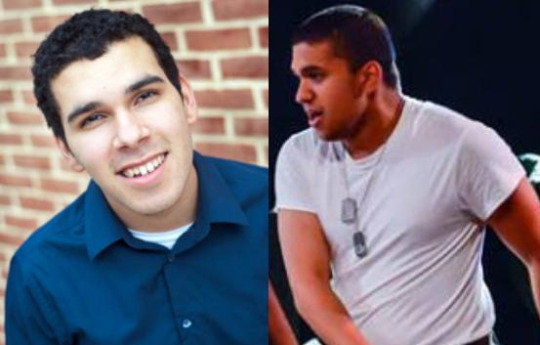
(Latinx Artists from DOGFIGHT: Javier del Pilar and Daniel Rodriguez.)
I missed this next free event at The Kennedy Center Theatre Lab for reasons I’m still beating myself up about. It was a reading of Lisa Loomer’s (Spanish-descent) ROE. I absolutely love Lisa Loomer and was so excited to see that The Kennedy Center Theatre Lab was doing a reading of one of her shows. From just reading a description of her play, I know it was probably an amazing evening. More companies should produce Lisa Loomer…

(Hispanic Artist from ROE: Lisa Loomer.)
The next show, I haven’t seen, but it runs until November 22 at Signature Theatre. CAKE OFF is directed by Joe Calarco (?-descent). I hope I’m able to get out to see this play that’s part of the Women’s Voices Theatre Festival. Joe Calarco is also Resident Director/Director of New Works at Signature Theatre- ie. one of the leaders helping make decisions at a huge company. That’s important.
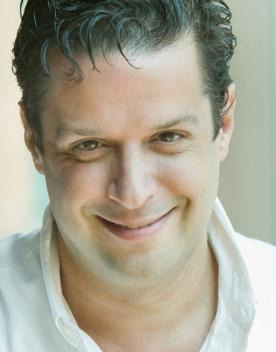
(Latinx/Hispanic Artist from CAKE OFF: Joe Calarco.)
This next play also (along with QUEEN GIRL IN THE WORLD and BAD DOG) features costume design by Ivania Stack (Costa Rican-descent): Woolly Mammoth Theatre Company’s WOMEN LAUGHING ALONE WITH A SALAD. I’m so happy that Ivania is so popular. That’s so important! I want to also plug Ivania’s company dog & pony dc . Follow them on twitter, like them on facebook, go to their website. Ivania Stack is a Ring Leader at dog & pony, which I’m sure means she’s one of las mera meras (the main mains) of the company. Go to their shows! Support Latinx Leaders in DC Theatre!
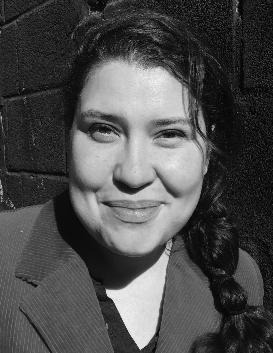
(Latinx Artist in WOMEN LAUGHING ALONE WITH A SALAD: Ivania Stack)
I was fortunate enough to catch Brittany Martz (Mexican-descent) in InterAct Story Theatre’s THE HERO OF EVERYTHING. This show was amazing- not just because of it’s artistic content but also because of it’s message. This show represented female empowerment and provided opportunities for diverse under-served youth to see themselves on stage.

(Latinx Artist in THE HERO OF EVERYTHING: Brittany Martz.)
Now, this next show, I’m a little on the fence talking about, simply because it has caused a lot of discomfort amongst some people I’ve spoken to about it. I’m talking about WSC Avant Bard’s FRIENDSHIP BETRAYED, an English translation of playwright María de Zayas y Sotomayor’s (Spanish-descent) LA TRAICIÓN EN LA AMISTAD. I was able to watch the show, and admired the language so much. I could hear de Zayas y Sotomayor’s words in my head in Spanish as the Avant Bard actors spoke in English. It was a fascinating experience. I will write more extensively about this show later and will provide a link here, so I won’t make too much of a statement on how I felt about this play. María de Zayas y Sotomayor is a fascinating playwright and because of this, I’m sure she’s been on GALA Hispanic Theatre and Teatro de la Luna’s radar for a long while. She’s been on my radar for years and I hope to one day have the space available to be able to study such an important literary figure in Hispanic Theatre History with my diverse communities.

(Hispanic Artist in FRIENDSHIP BETRAYED: María de Zayas y Sotomayor)
Finally, there is one last Latina that must be recognized. The Kennedy Center Theatre Lab provided a discussion about intersectionality in the Women’s Voices Theatre Festival, called (ALL) WOMEN’S VOICES: A CONVERSATION ABOUT INTENTIONALITY AND INCLUSION. This conversation featured Paige Hernandez (Cuban-descent) as a performer and panelist. A friend of mine linked me to a video of this event after the fact, and I was so happy that it happened! Intersectionality is so important. I was so happy that Paige was able to represent for Latinas (and especially Afro-Latinas and Latinas of Color) in an Anglocentric theatre world for this conversation. Such a bummer she had to leave early, but she was working on Theatre J’s QUEEN GIRL IN THE WORLD, mentioned above. I’ve caught Paige in other works before and she was just amazing. ¡Adelante!

(Latinx Artist in (ALL) WOMEN’S VOICES: A CONVERSATION ABOUT INTENTIONALITY AND INCLUSION: Paige Hernandez)
These companies should be celebrated for their inclusion of Latinx artists into their productions and because they are taking motions to make our theatre community a better place. However, we should remember that it’s just 13 of 62 productions… which means 21% of shows performed during LAHM had at least 1 Latinx artists.Of those 62 only 3 of those shows had more than 5 Latinx artists in it: a teeny-weeny 5%. These numbers are important because they show that we have a long way to go.
It is also important to remember that racial inequality exists in Latin America and in the diaspora. It is evident by the Latinx artists featured in US media that White and Mestizx Latinx folks dominate the Latinx narrative, a privilege that can be very dangerous if gone unchecked. I don’t think it is 100% intentional, but at the same time, I think it should be addressed. There is diversity in DC Latinx artists and it’s obvious from the people featured in this article (look at those beautiful diverse Latinx faces!). We still need to do more to embrace Afro-Latinx and Indigenous-Latinx identities and cultures. Not to mention even discussing Asian-Latinx narratives. More diversity and inclusion can happen still.
I think something that needs to happen is that Latinx writers need to be cultivated. A local company should put out a program for local Latinx playwrights to develop their works to create a more inclusive community. I would love to be considered for a program like that. Somewhere I could work in community with other Latinx playwrights, to reshape the narratives of our diverse people. Only then can we really drive our community forward and truly become part of DC Theatre.
This season, there are 20 other shows that have been announced to be either written or directed by a Latinx or Hispanic artist, that I feel everyone should be aware of:
GALA Hispanic Theatre’s NUEVAS AVENTURAS DE DON QUIJOTE, based on the novel by Miguel de Cervantes Saavedra (Spanish-descent) Adaptation by Patricia Suárez (Argentine-descent) and directed by Cornelia Cody (?-descent) runs October 19 to 31
Constellation Theatre Company’s AVENUE Q with music and lyrics by Robert Lopez (Filipino-descent) [and Jeff Marx] runs October 22 to November 23.
Kennedy Center TYA’s ELEPHANT & PIGGIE’S WE ARE IN A PLAY! with music by Deborah Wicks La Puma (Mexican-descent) runs November 27 to January 3.
In Series’ BY GEORGE, BY IRA, BY GERSHWIN directed by Abel Lopez (?-descent) [and Reenie Codelka, Frank Conlon, and Angelisa Gillyard] runs November 29 to December 20.
GALA Hispanic Theatre’s EN LA USA ME QUEDE by Saulo García (Colombian-descent), directed by Valentin Alvarez-Campos (Cuban-descent) runs December 4 and 5.
Mosaic Theatre’s WRESTLING JERUSALEM directed by Michael John Garcés (Colombian-descent) runs January 6 to 24.
Kennedy Center TYA’s OLIVERio: A Brazilian Twist by Karen Zacarías (Mexican-descent) and music by Deborah Wicks La Puma (Mexican-descent) runs January 30 to February 21.
GALA Hispanic Theatre’s SEÑORITA Y MADAME: The Secret War of Elizabeth Arden and Helena Rubenstein By Gustavo Ott (Venezuelan-descent) directed by Conseulo Trum (Venezuelan-descent) runs February 4 to 28
In Series and The Washington Ballet’s Studio Company’s CARMEN IN HAVANA directed and choreographed by Septime Webre (Cuban-descent) and Carlos C. Rodríguez (Venezuelan-descent) [and David Palmer] runs February 5 to 7.
Olney Theatre Center’s CARMEN: AN AFRO-CUBAN JAZZ MUSICAL written and directed by Moisés Kaufman (Venezuelan-descent), and choreography by Sergio Trujillo (Colombian-descent), runs February 11 to March 6.
THE ANTIGONE PROJECT: A Play in 5 Parts by Caridad Svich (Cuban/Argentine/Spanish-descent) [and Tanya Barfield, Karen Hartman, Chioro Miyagawa, and Lynn Nottage] runs February 17 to March 6.
Signature Theatre’s THE FLICK directed by Joe Calarco (?-descent) runs March 1 to April 17
GALA Hispanic Theatre’s EL MUNDO ES UN PAÑUELO By Jorge Diaz (Chilean-descent) directed by Hugo Medrano (Argentine-descent) runs March 7 to 19
National Theatre’s JERSEY BOYS with choreography by Sergio Trujillo (Colombian-descent) runs April 6 to 24.
GALA Hispanic Theatre’s CRONICA DE UNA MUERTE ANUNCIADA/CHRONICLE OF A DEATH FORETOLD by Gabriel García Márquez (Colombian-descent), adapted by Jorge Ali Triana (Colombian-descent), and directed by José Zayas (Puerto Rican-descent) runs April 7 to May 8.
Imagination Stage’s LOOKING FOR ROBERTO CLEMENTE by Karen Zacarias (Mexican-descent), and music by Deborah Wicks La Puma (Mexican-descent) runs April 13 to May 22.
Theater J’s THE BODY OF AN AMERICAN directed by José Carrasquillo (Puerto Rican-descent) runs April 27 to May 29.
Folger Theatre’s DISTRICT MERCHANTS Directed by Michael John Garcés (Colombian-descent) runs May 31 to July 3.
GALA Hispanic Theatre’s EL PASO BLUE By Octavio Solis (Mexican-descent) directed by José Carrasquillo (Puerto Rican-descent) runs June 2 to 26.
Olney Theatre Company’s THE LITTLE MERMAID with choreography by Septime Webre (Cuban-descent) runs June 22 to August 14.
This may seem like a lot when written down, but it really isn’t when you begin comparing. I really don’t get why DC Theatre isn’t rushing to get Latinx playwrights and directors to do their thing…. I think it would be awesome if DC theatre companies could do at least 1 play per season by a Latinx playwright and with a Latinx director. Those Latinx artists can be of any race, but at least Latinx stories would be getting told. Latinx Audiences are part of the community too. DC theatre should be more inclusive of those audiences.
I will end this incredibly long blog post by saying that I’m so proud of all the people I listed in this post as well as all the other Latinx artists in DC Theatre I did not mention. Juntxs, nada nos puede vencer. Together, there’s nothing we can’t overcome.
¡Que vivan los Latinoamericanxs de Washington D.C.! ¡Que viva América!
1 note
·
View note